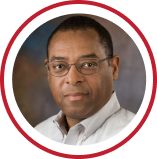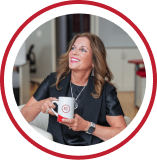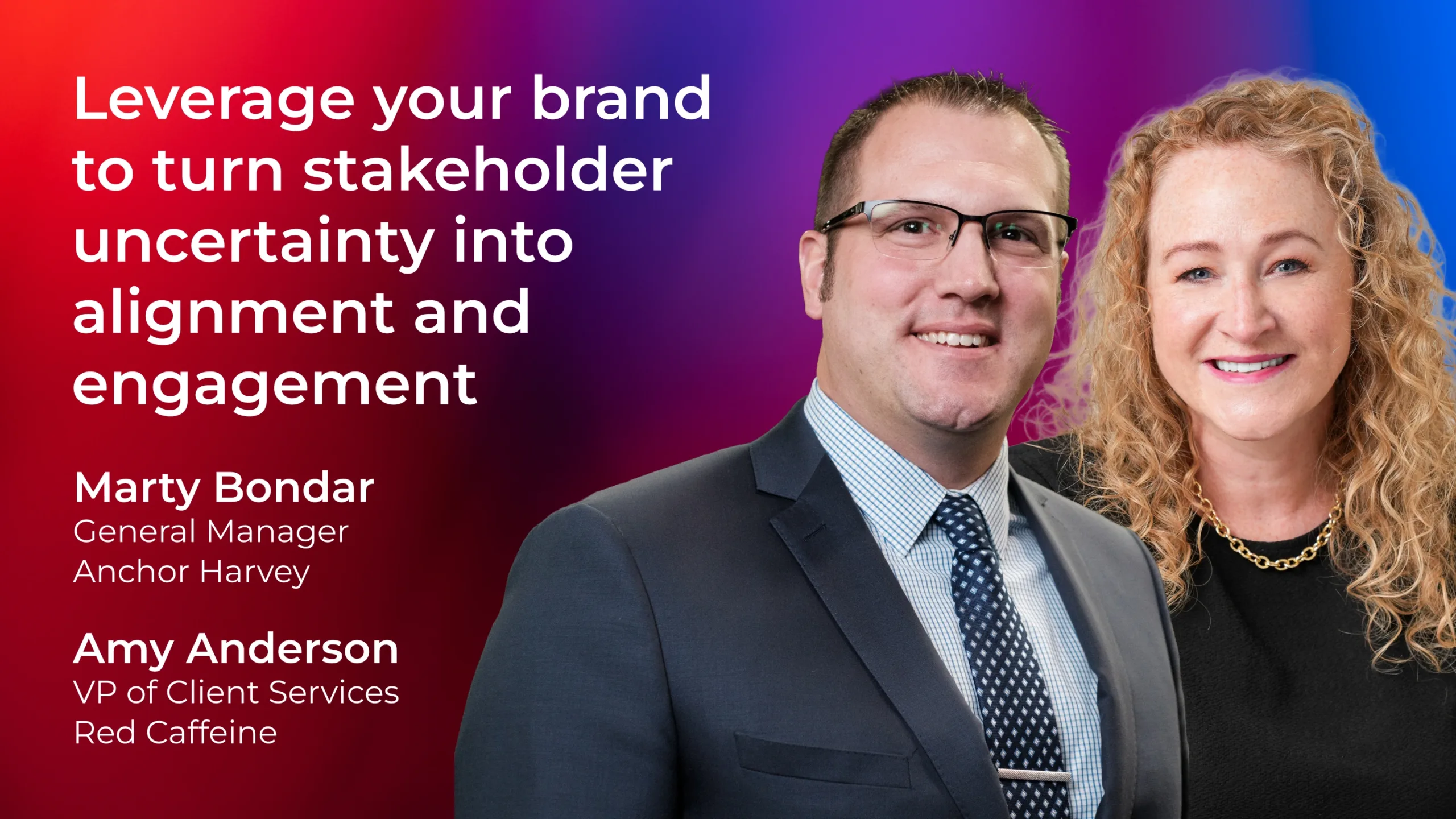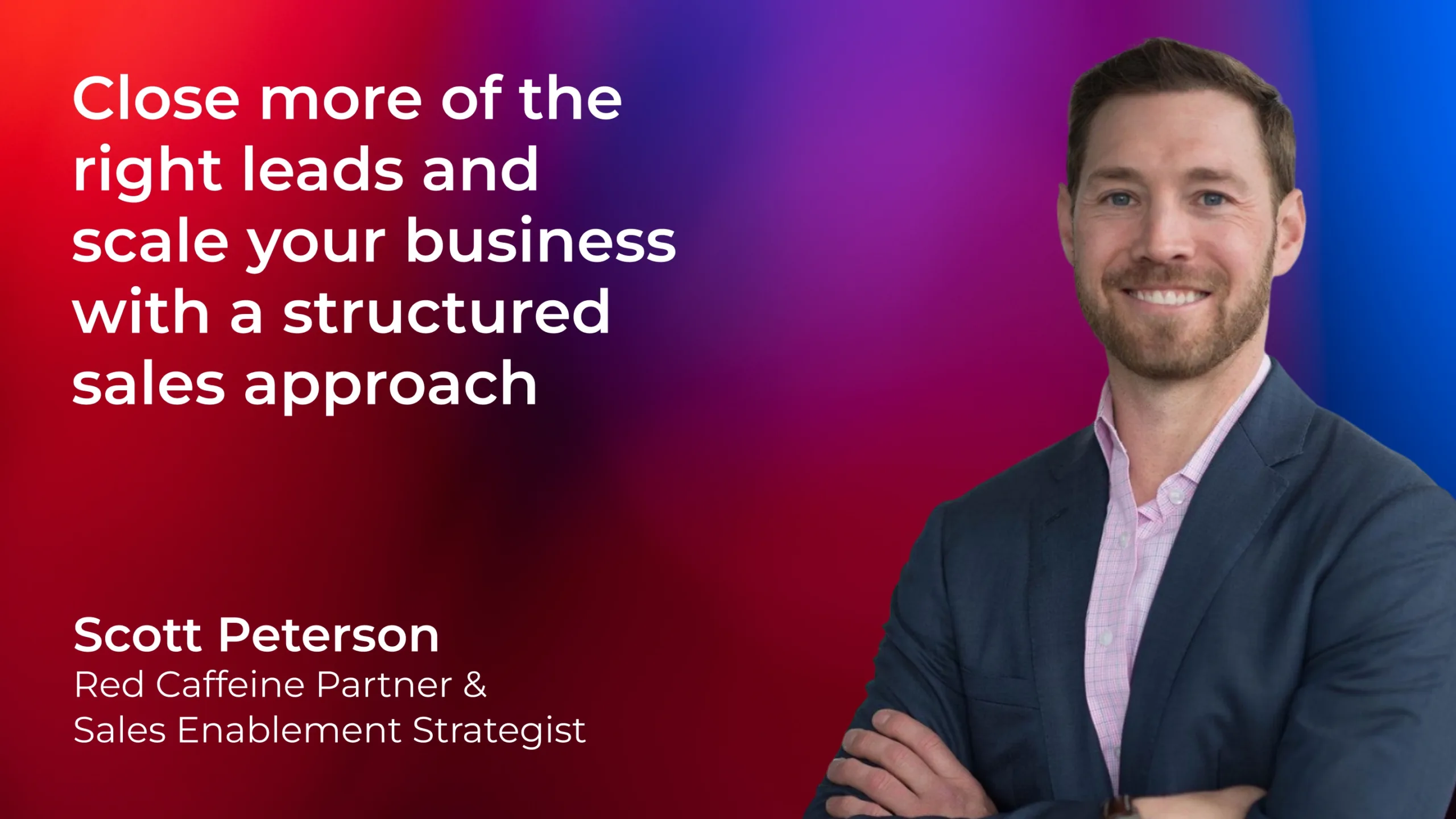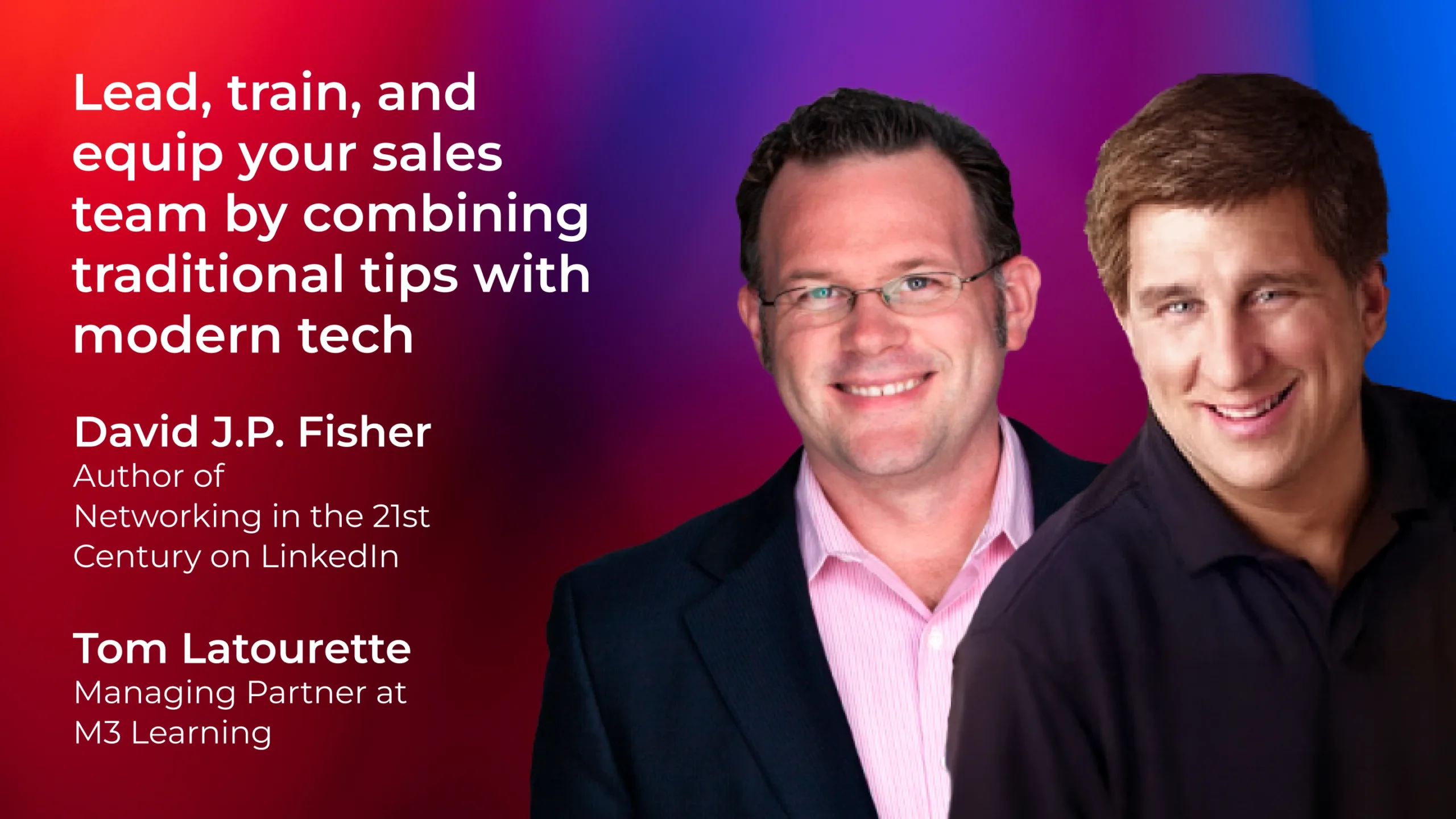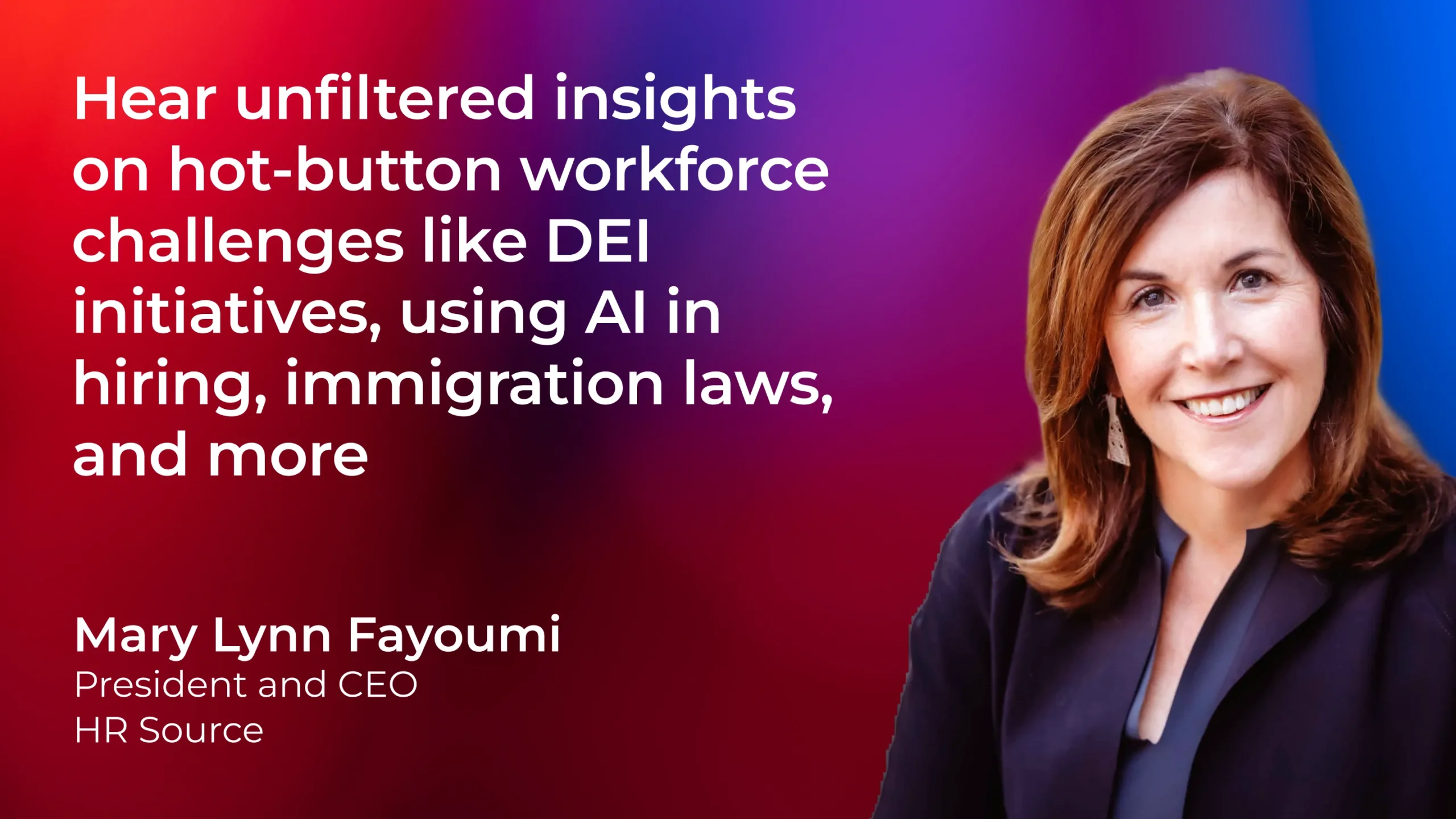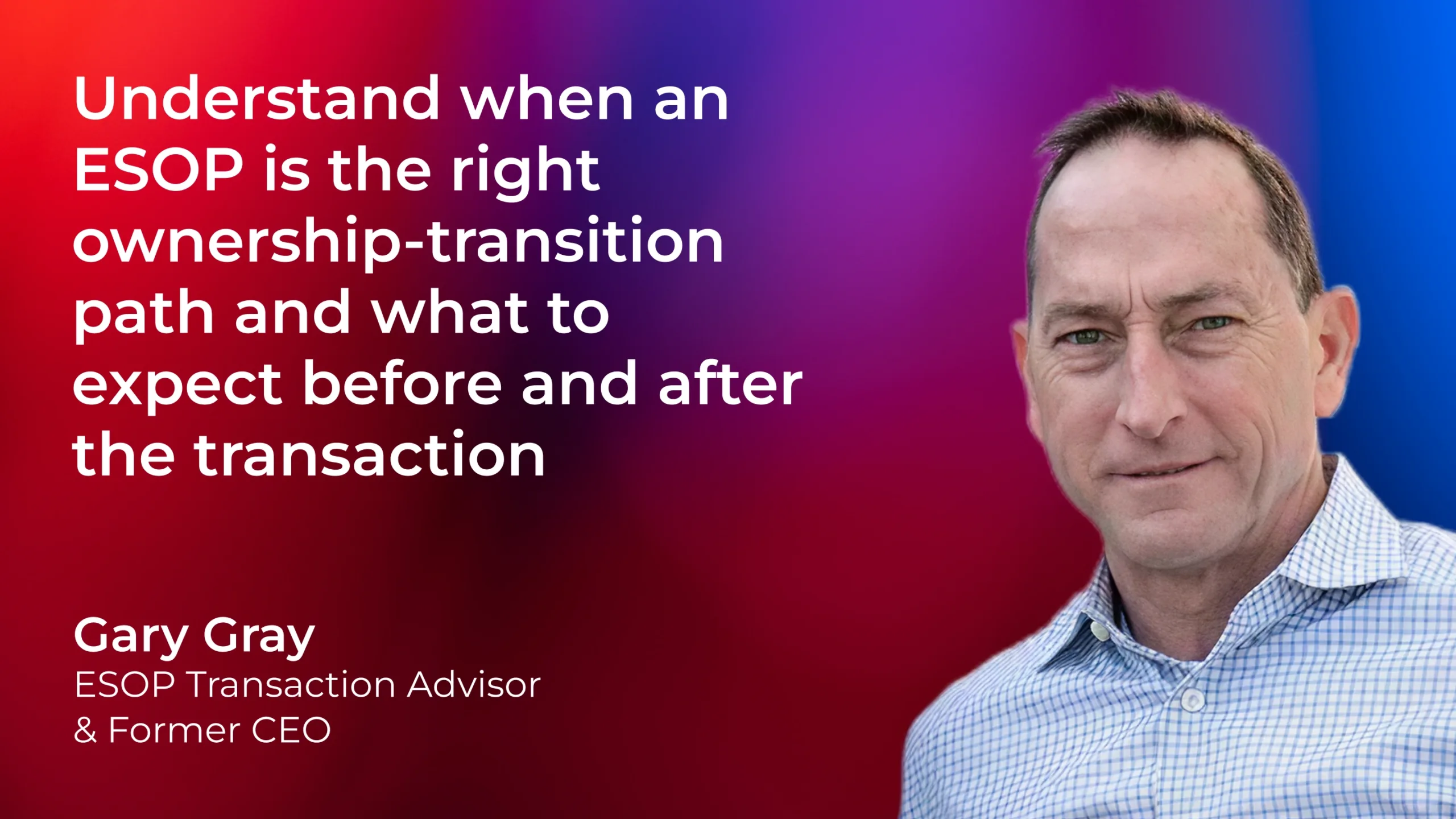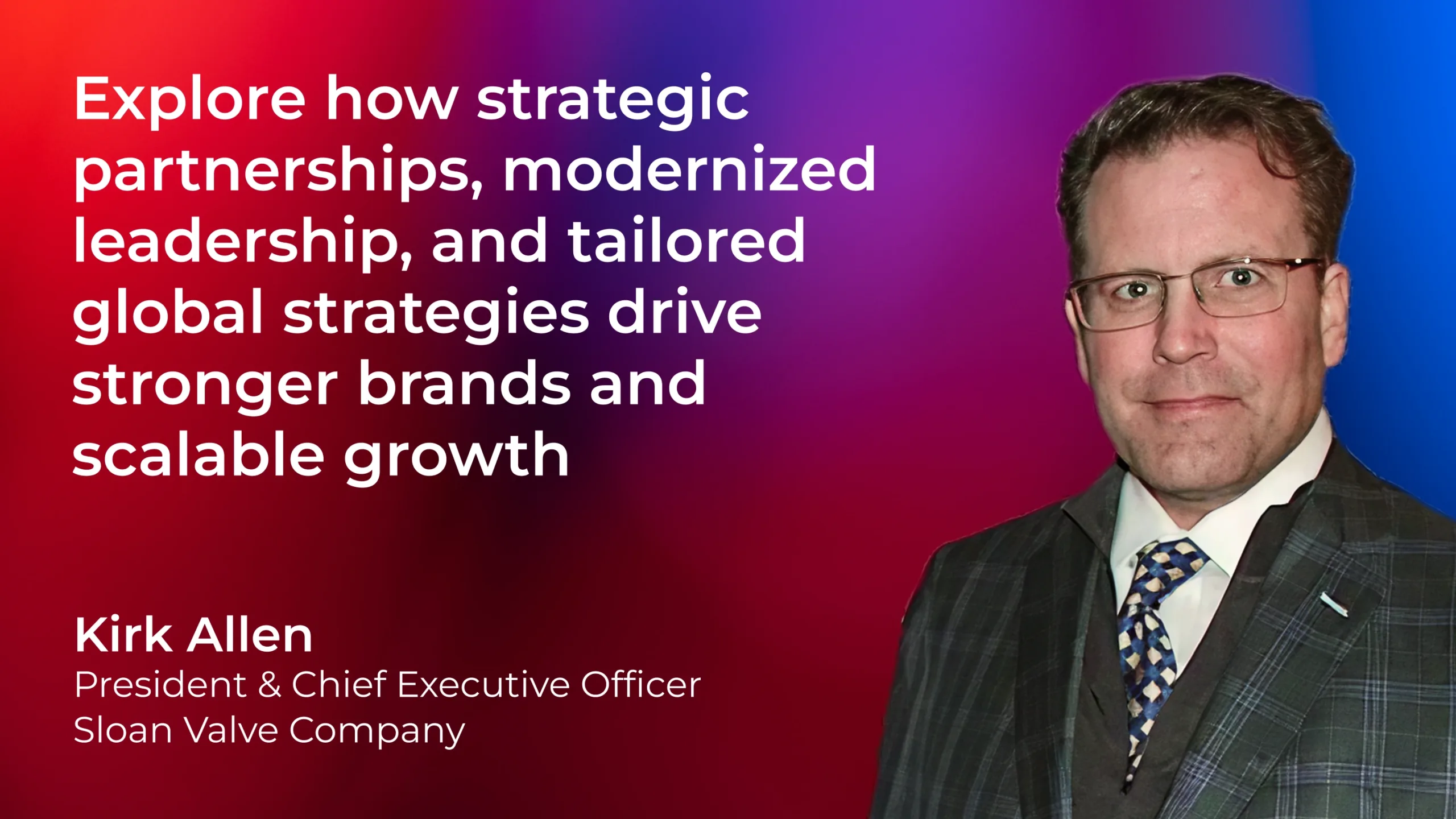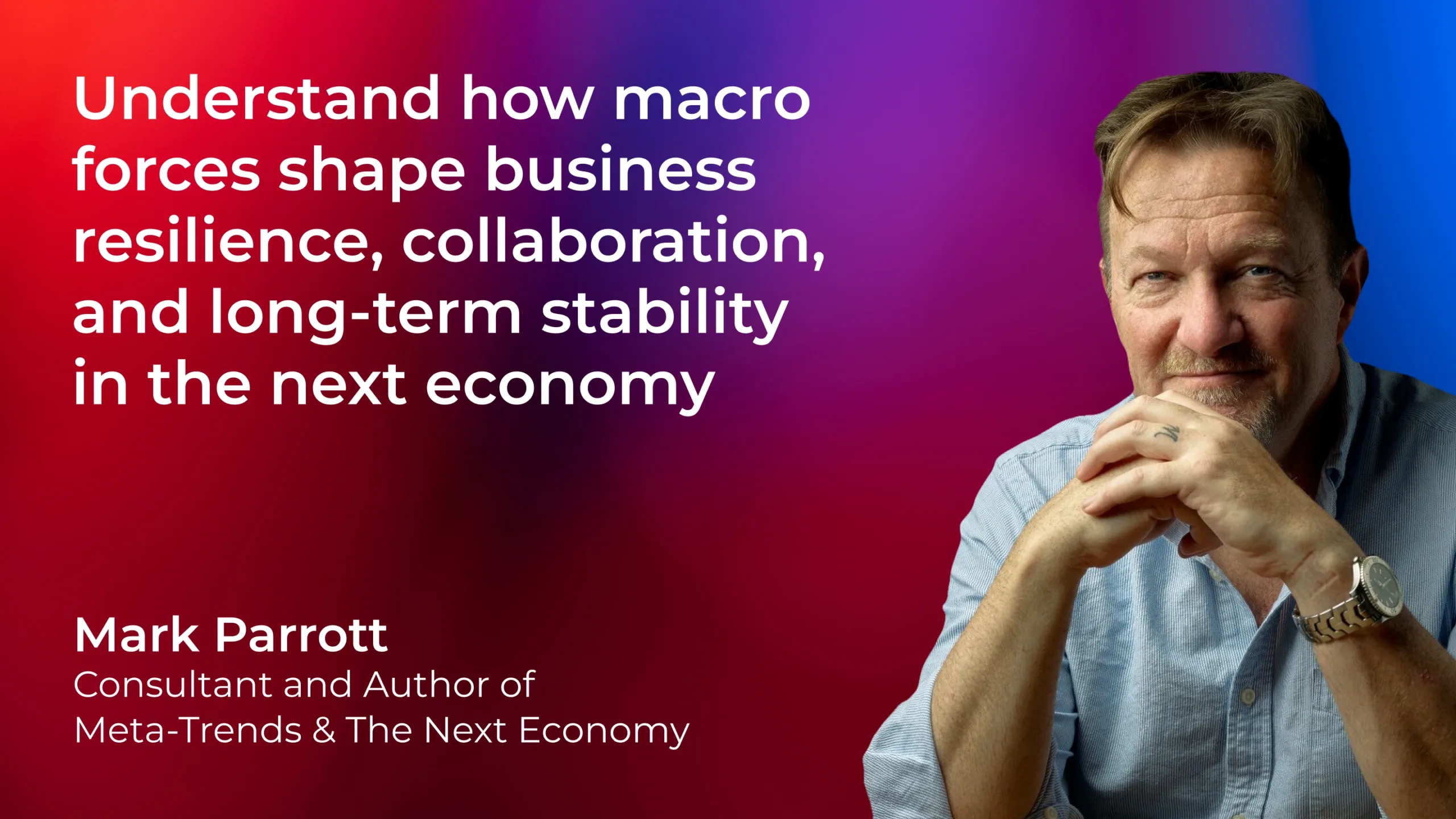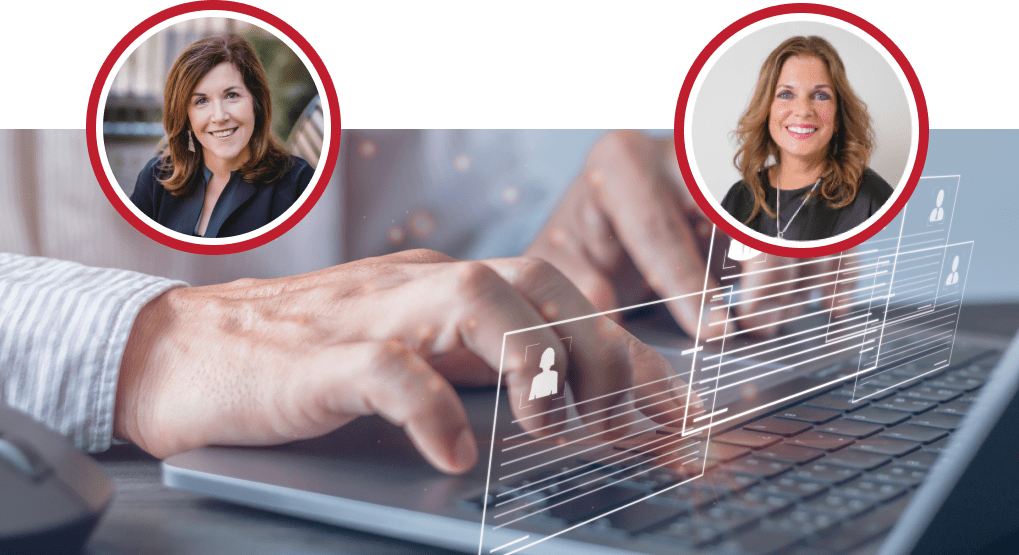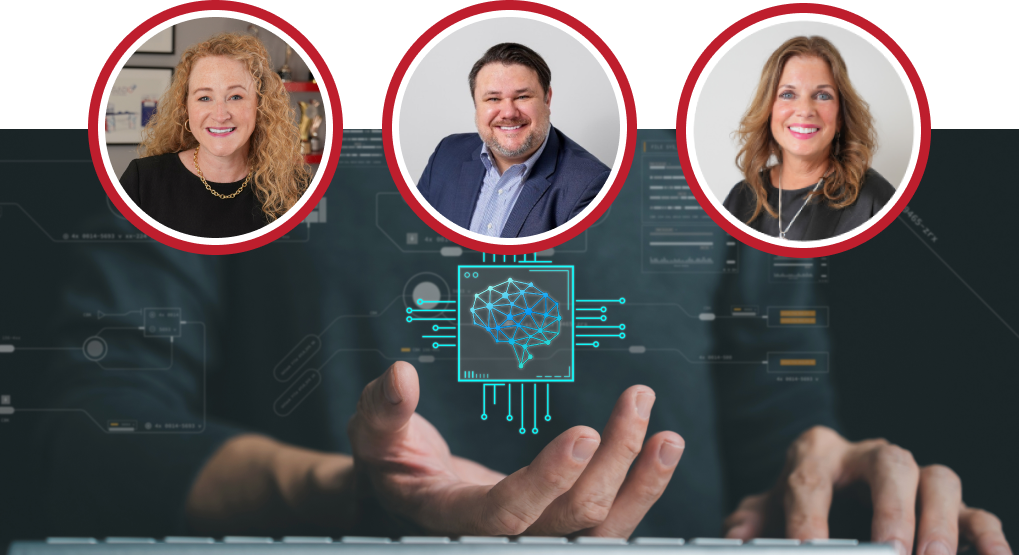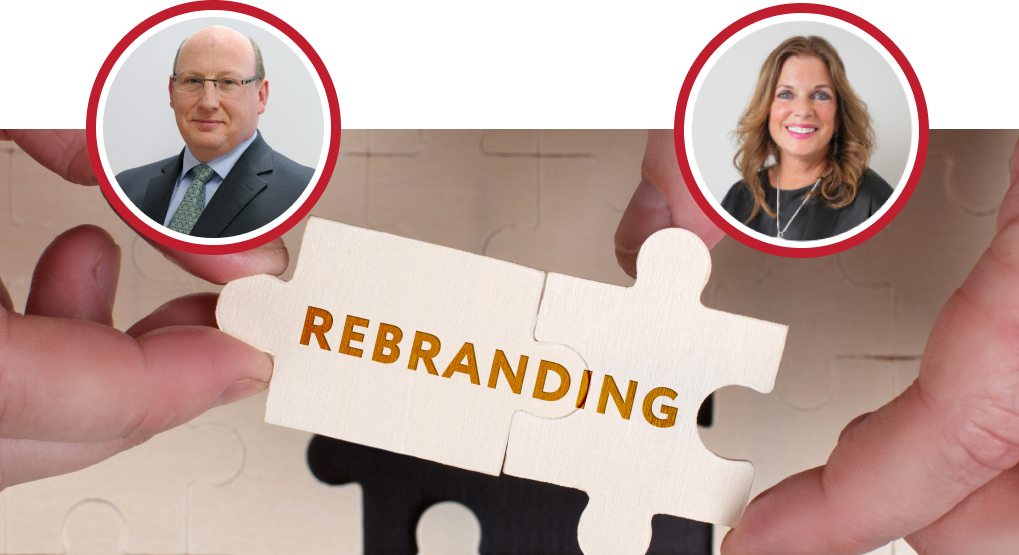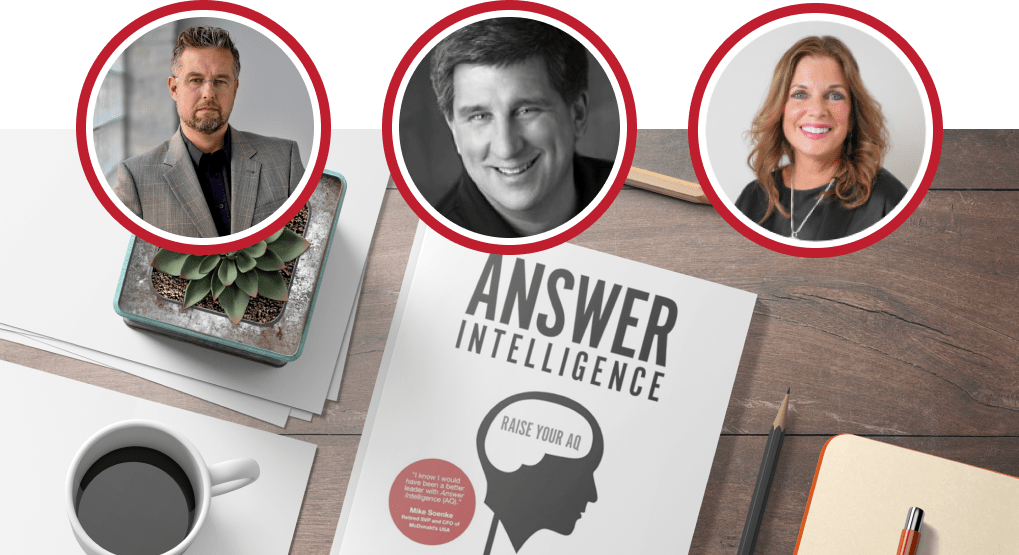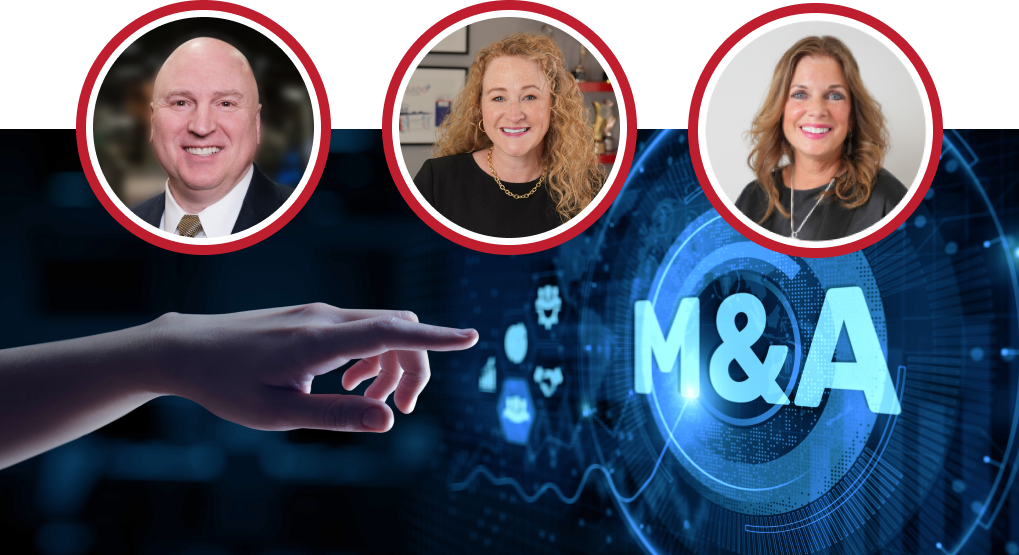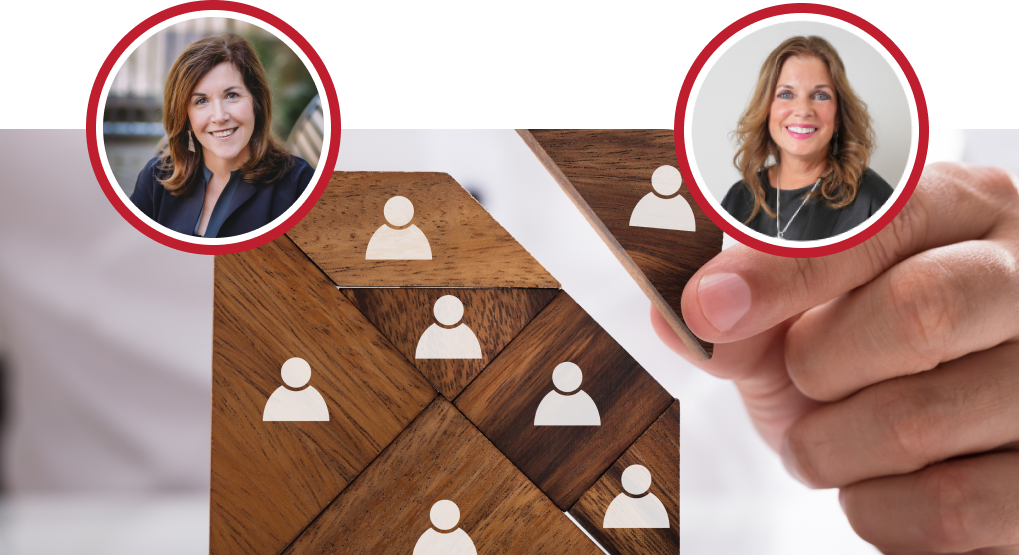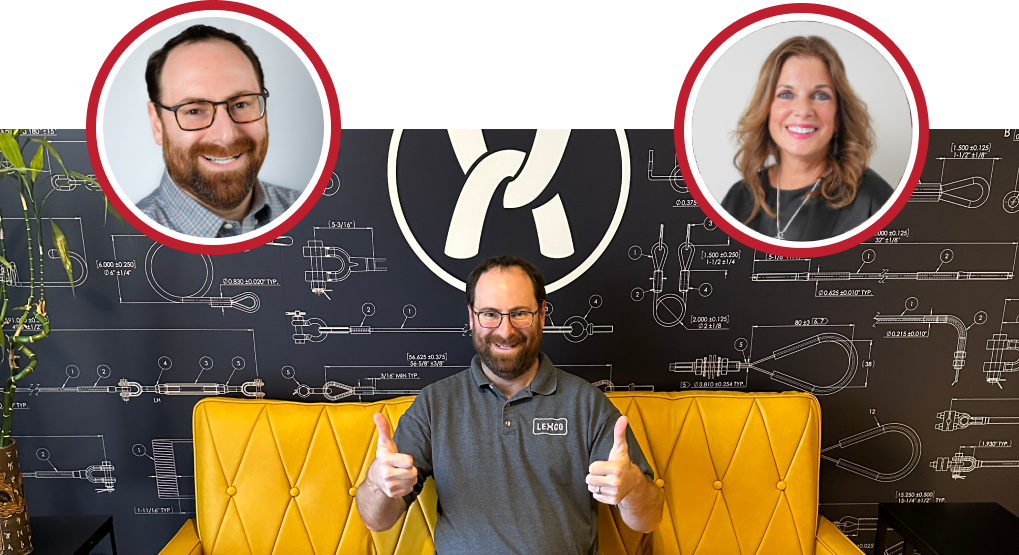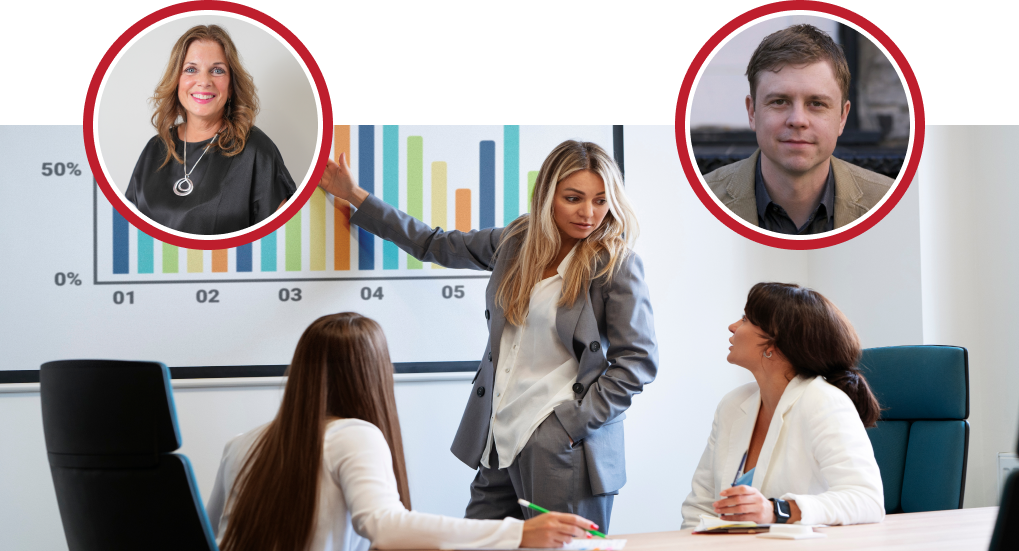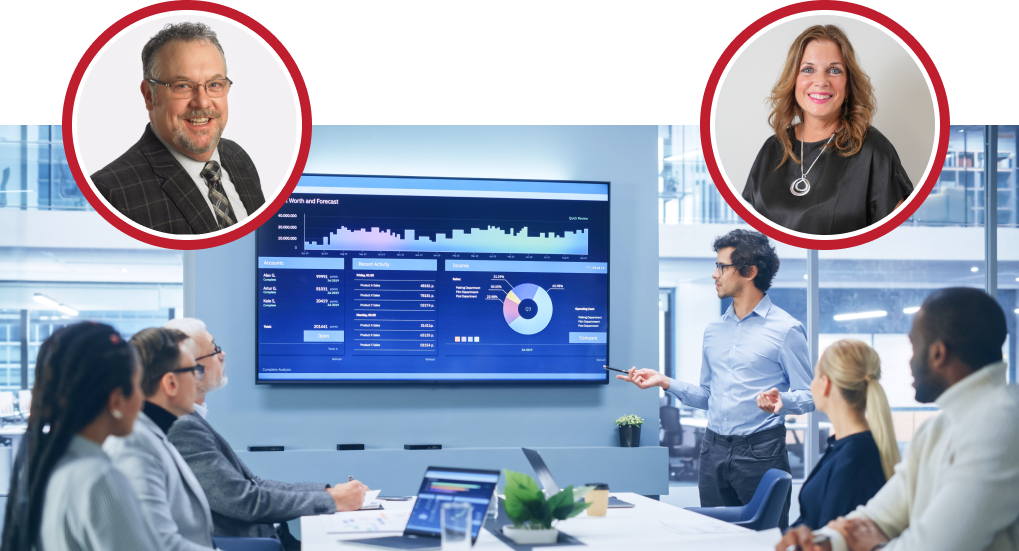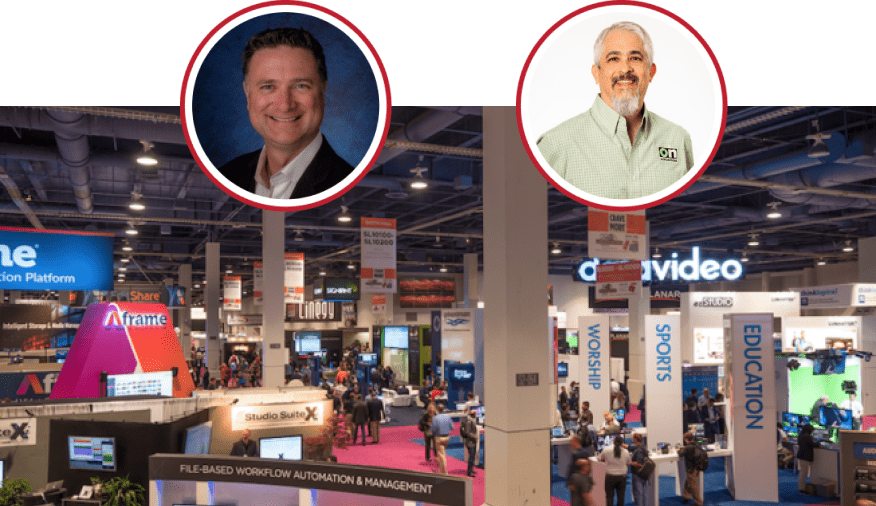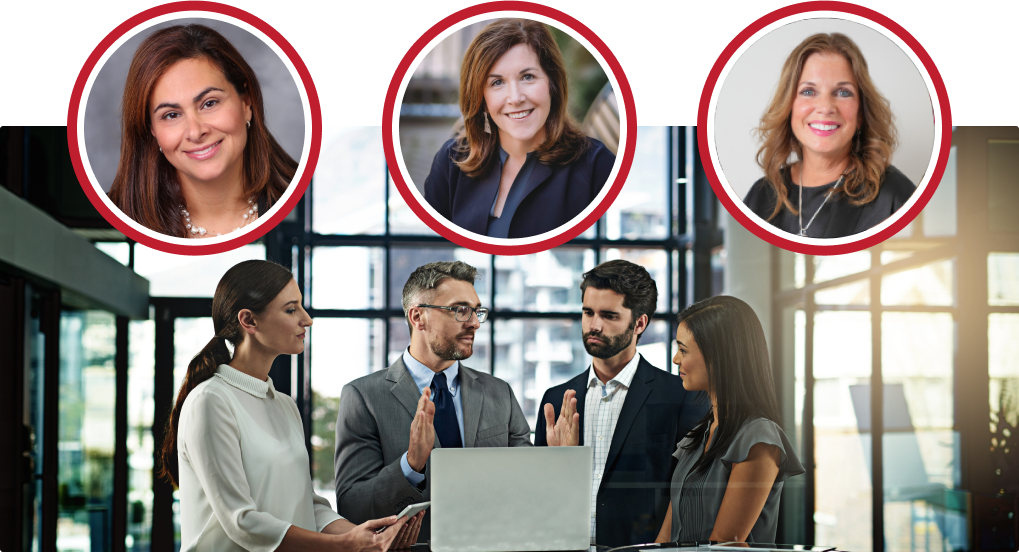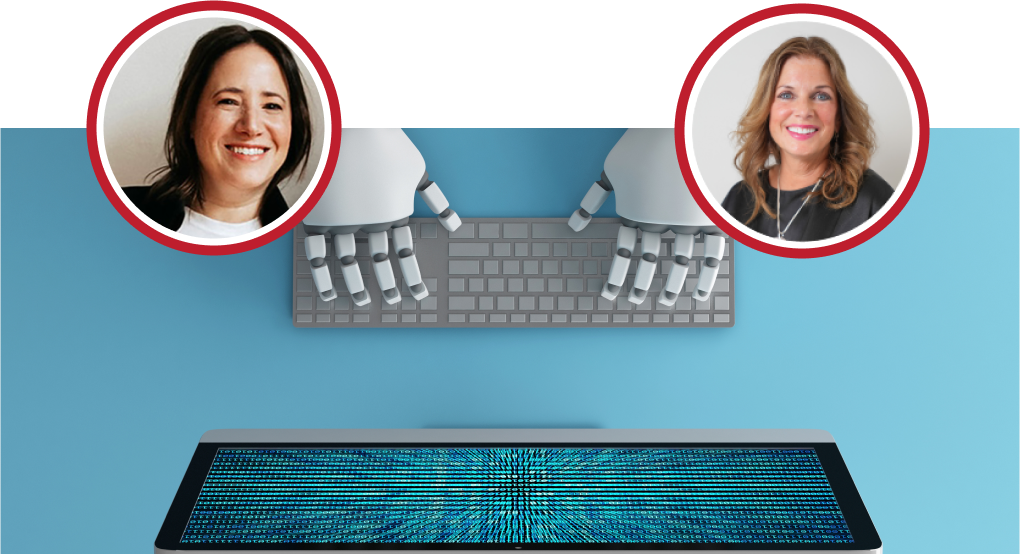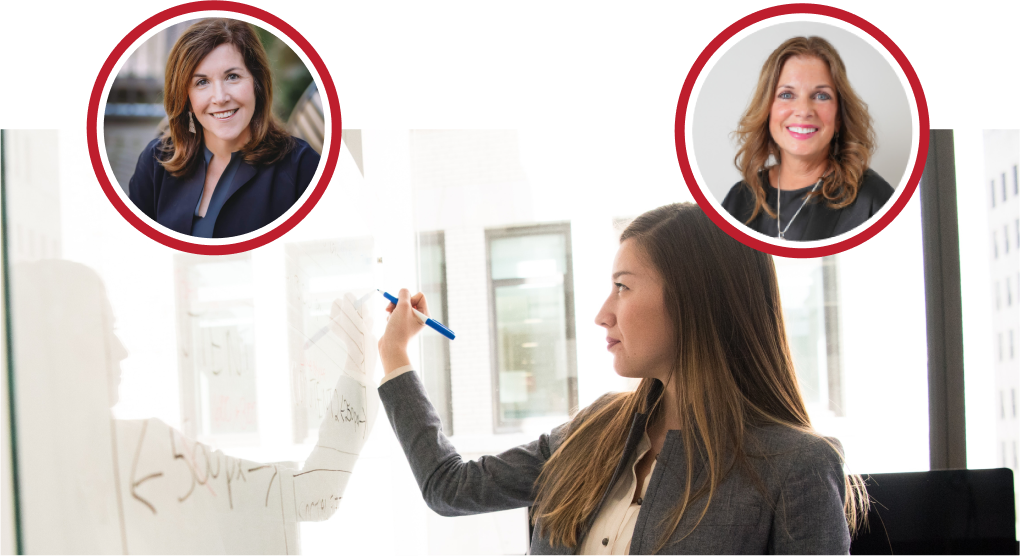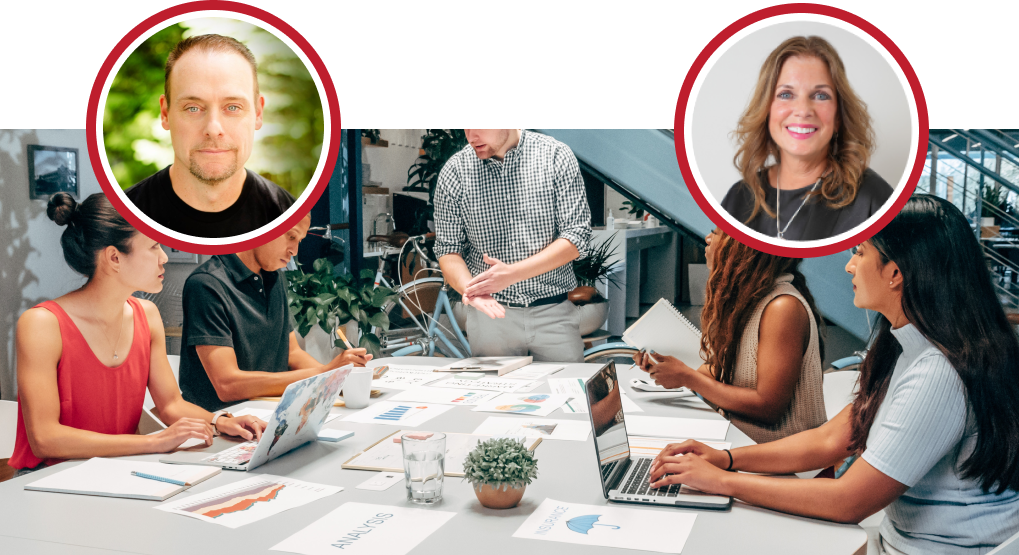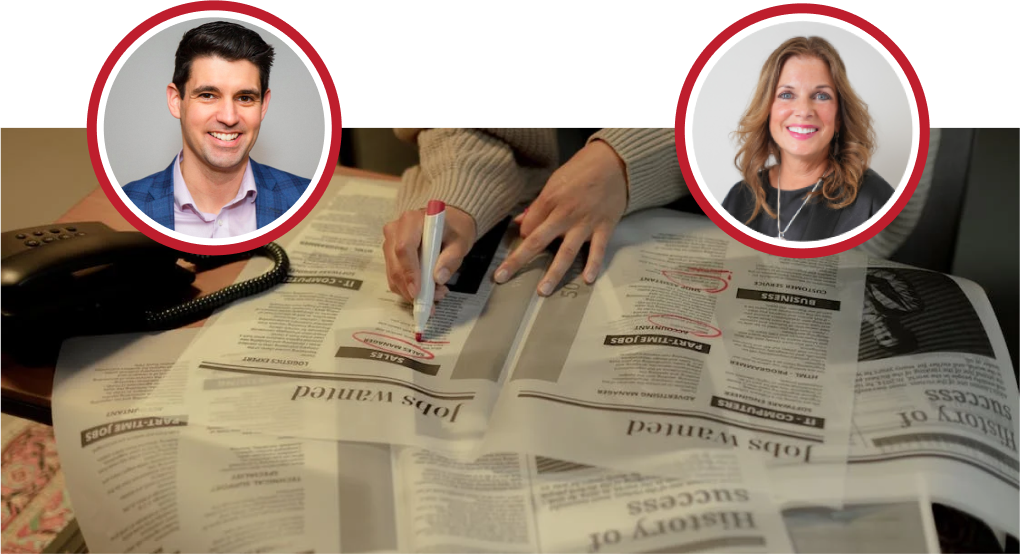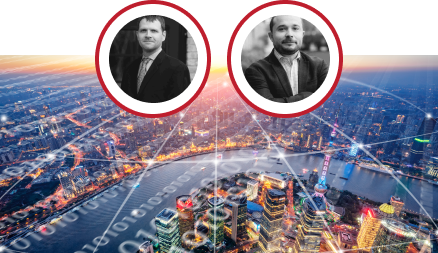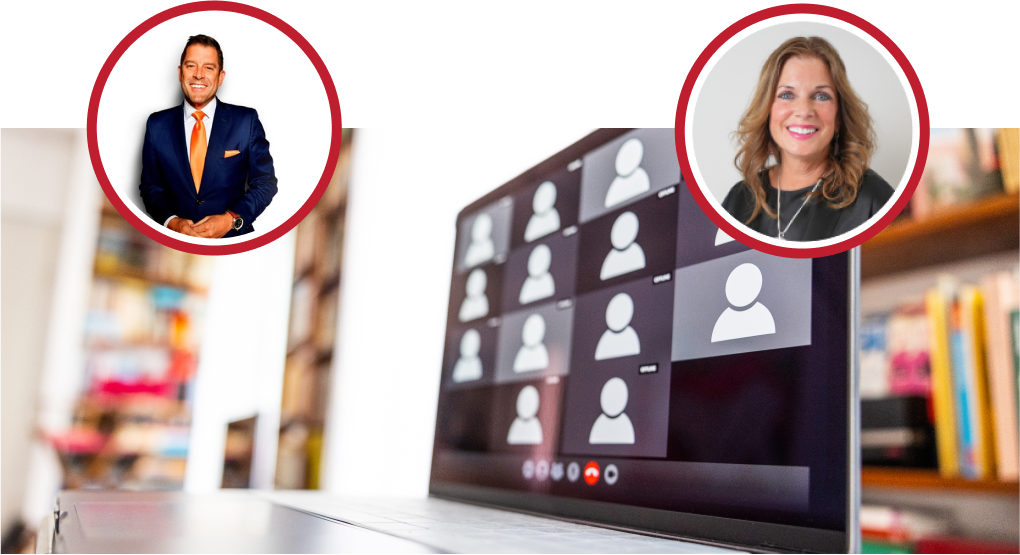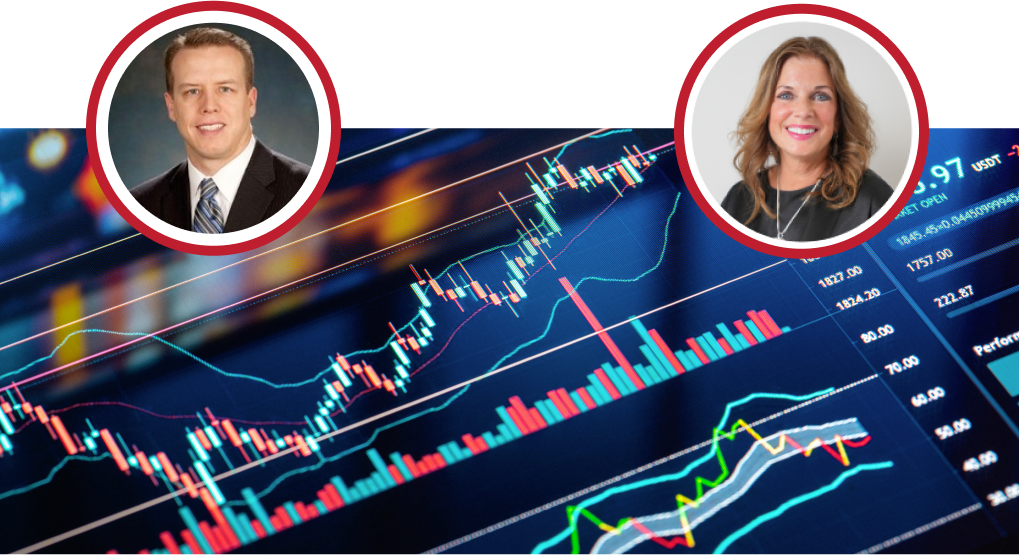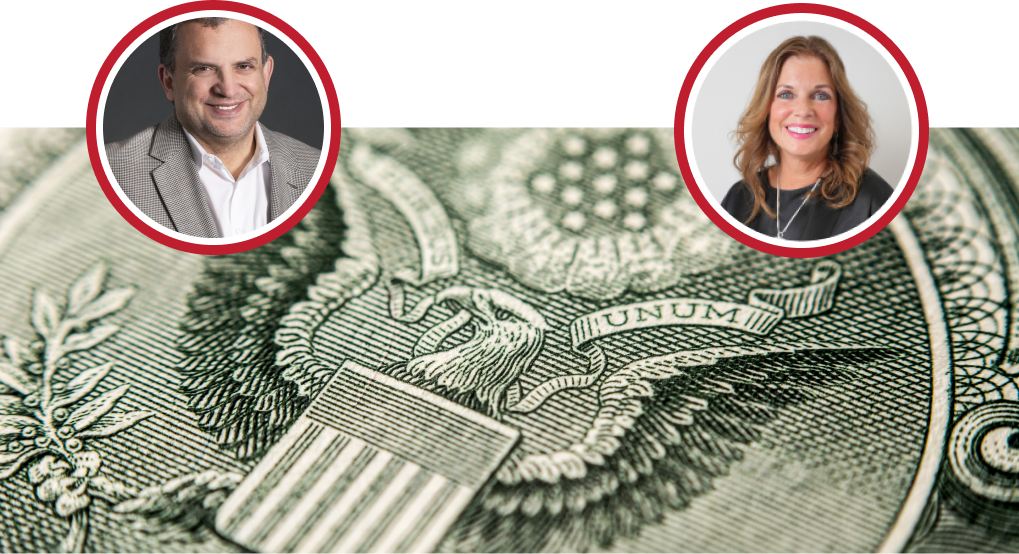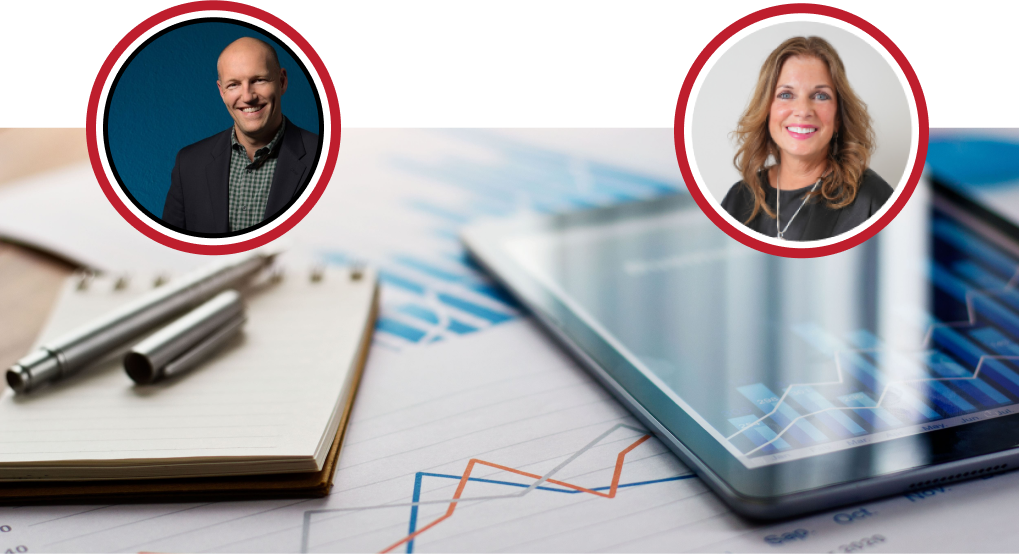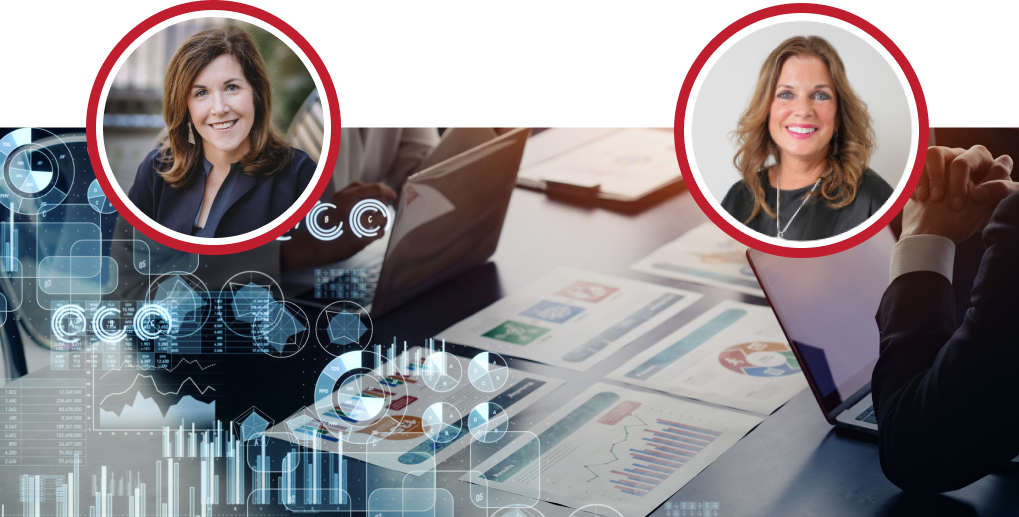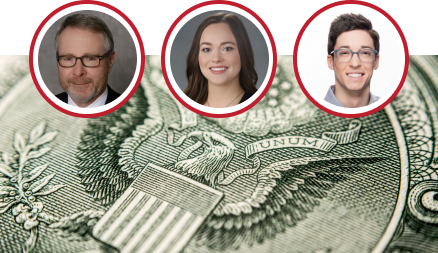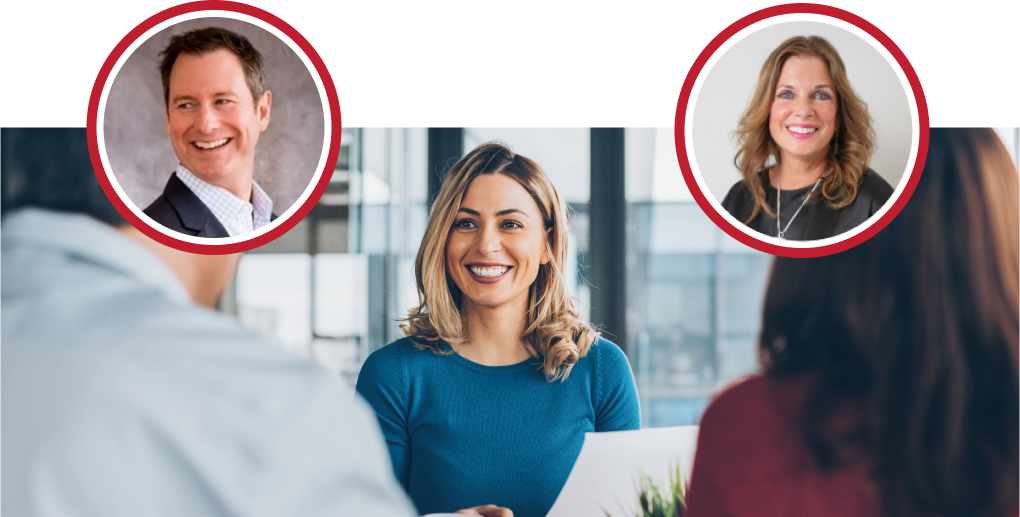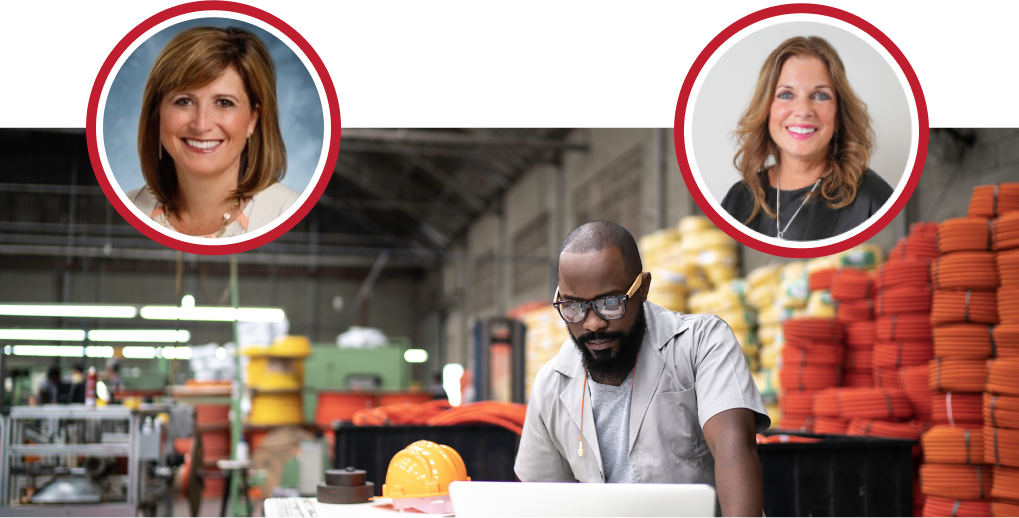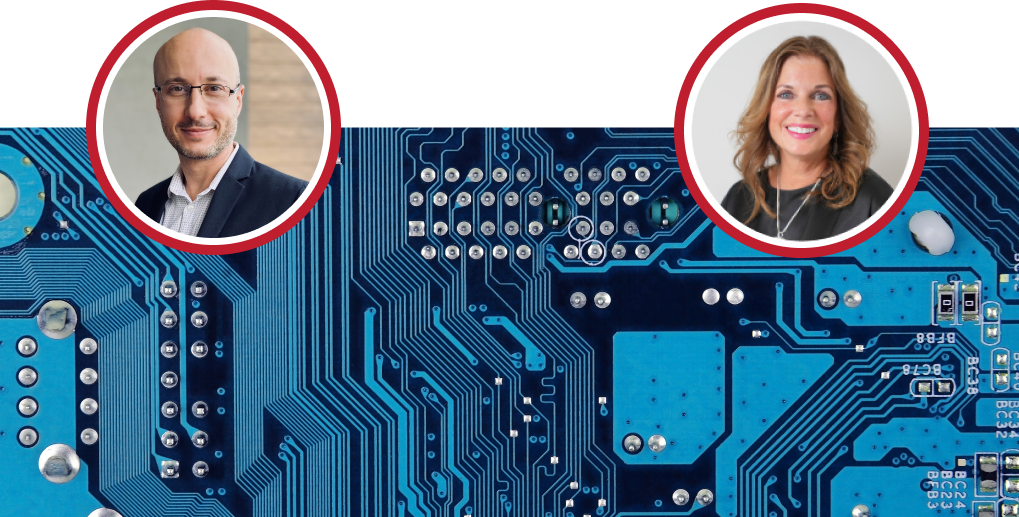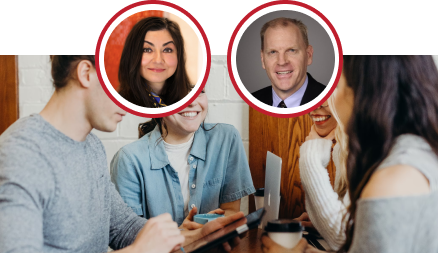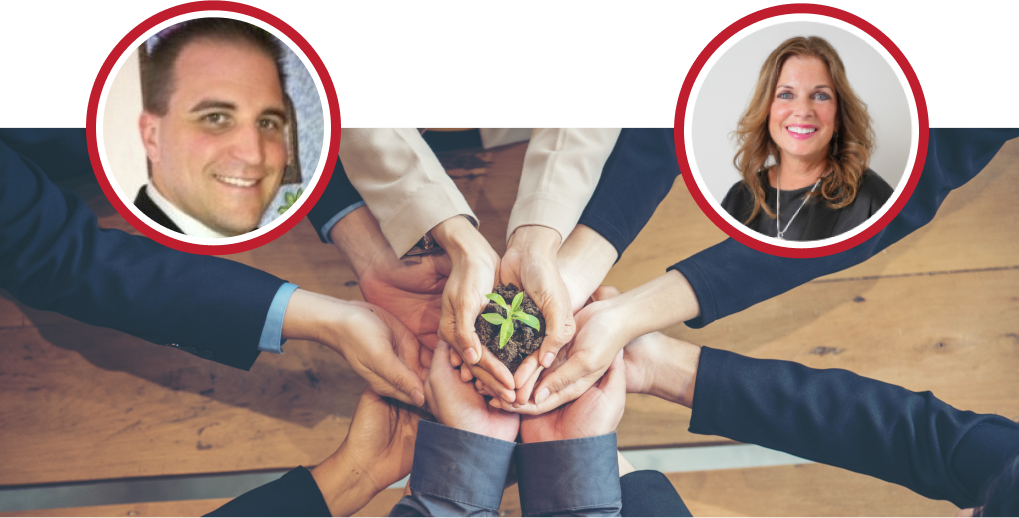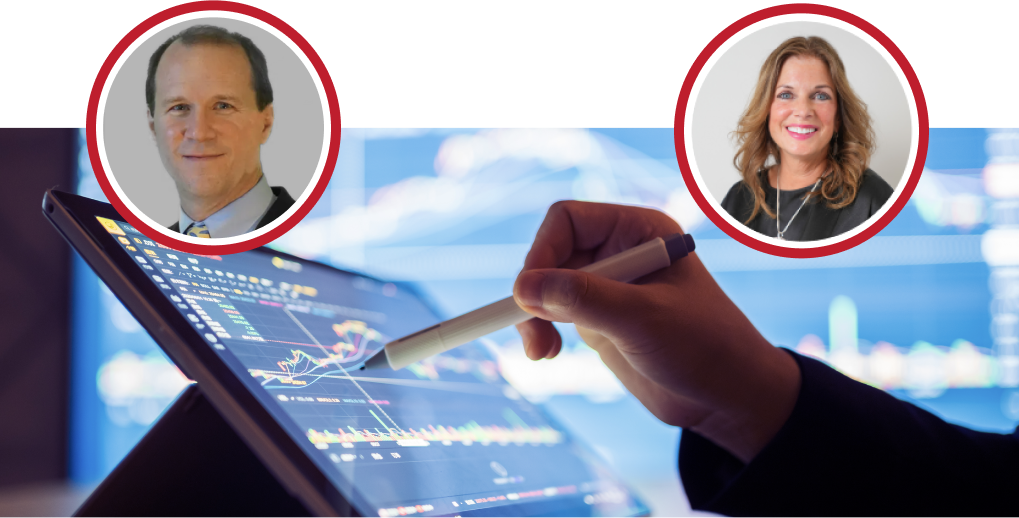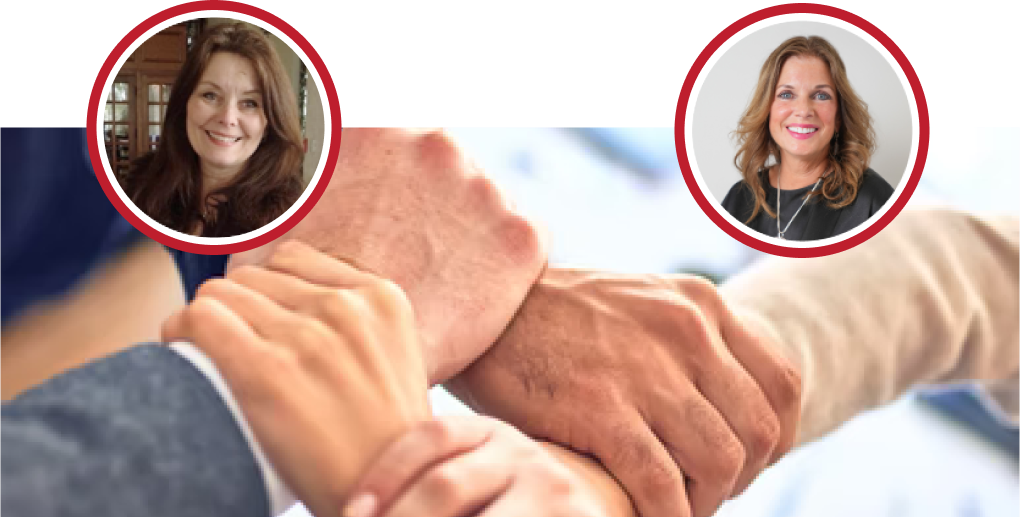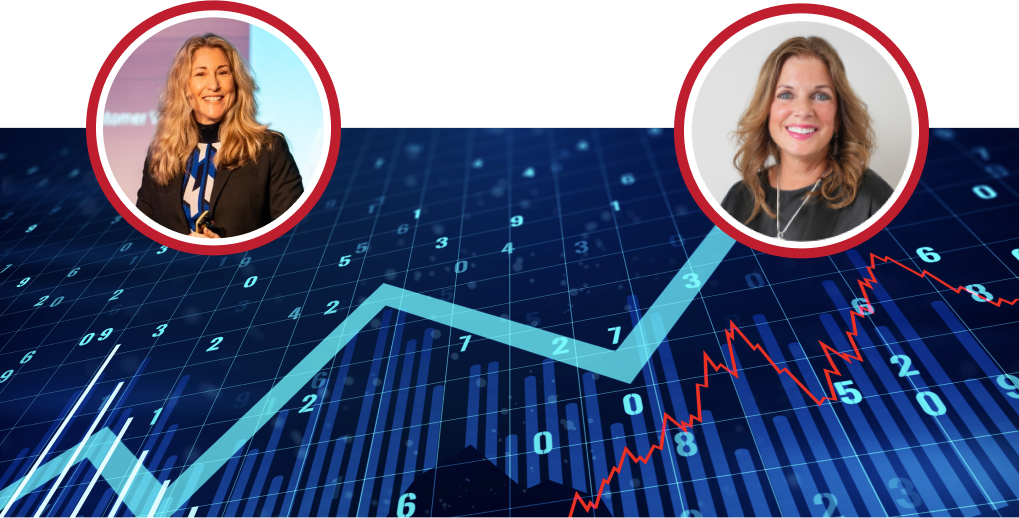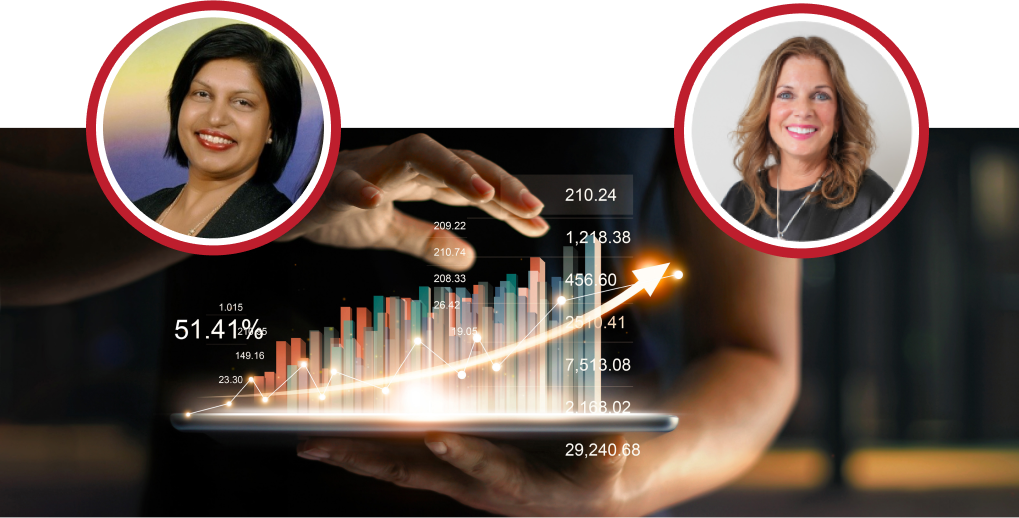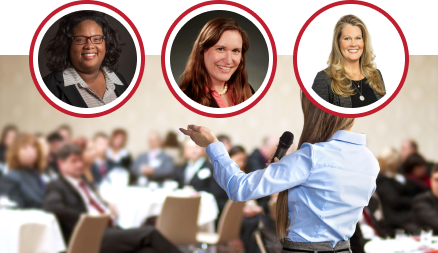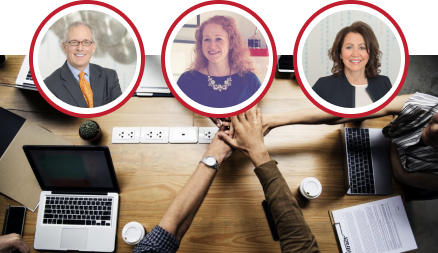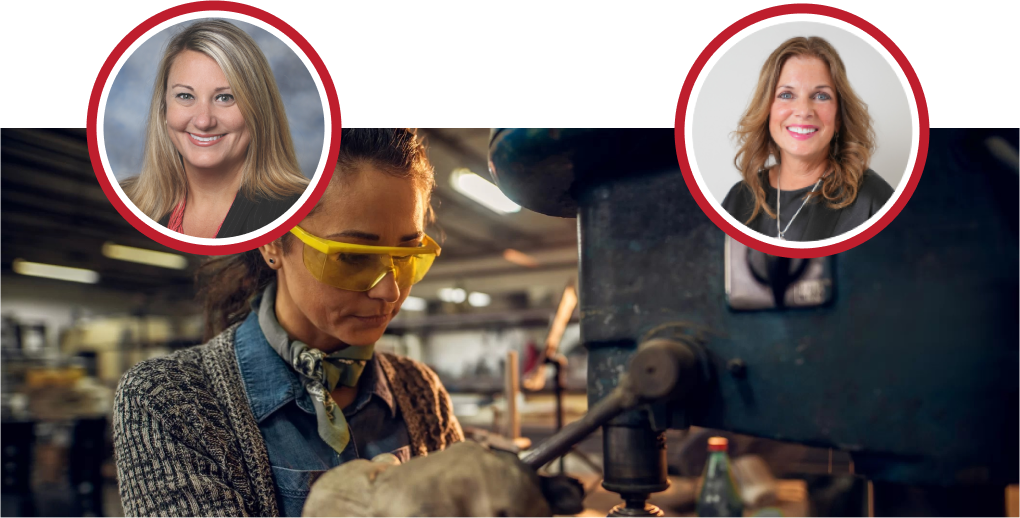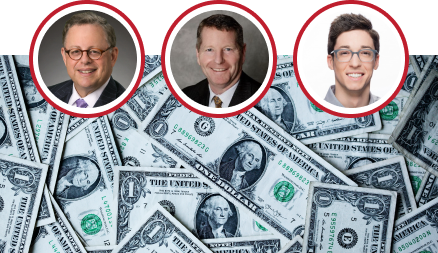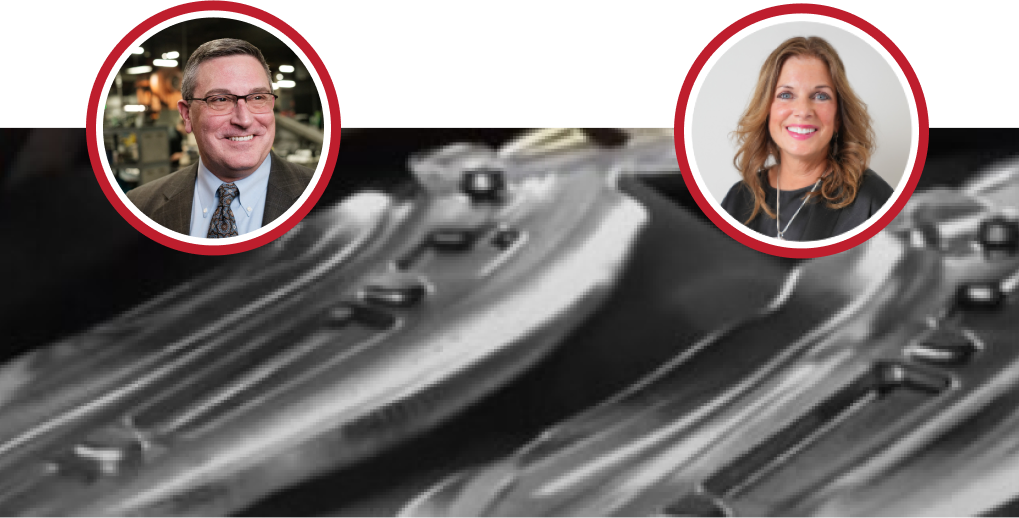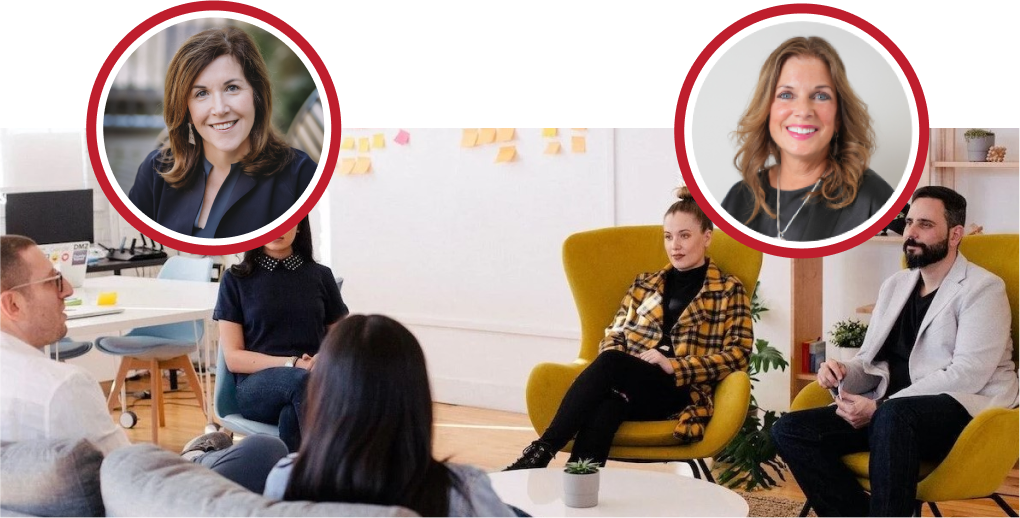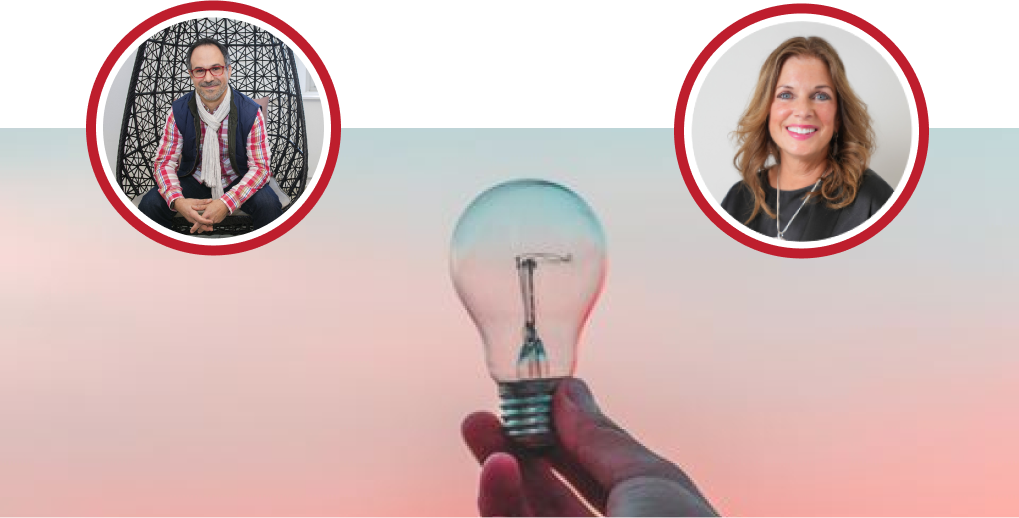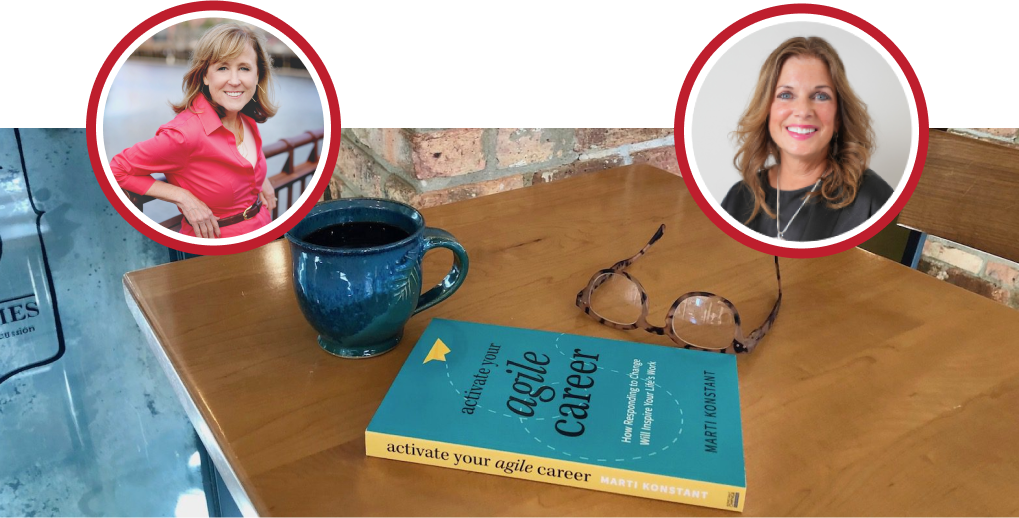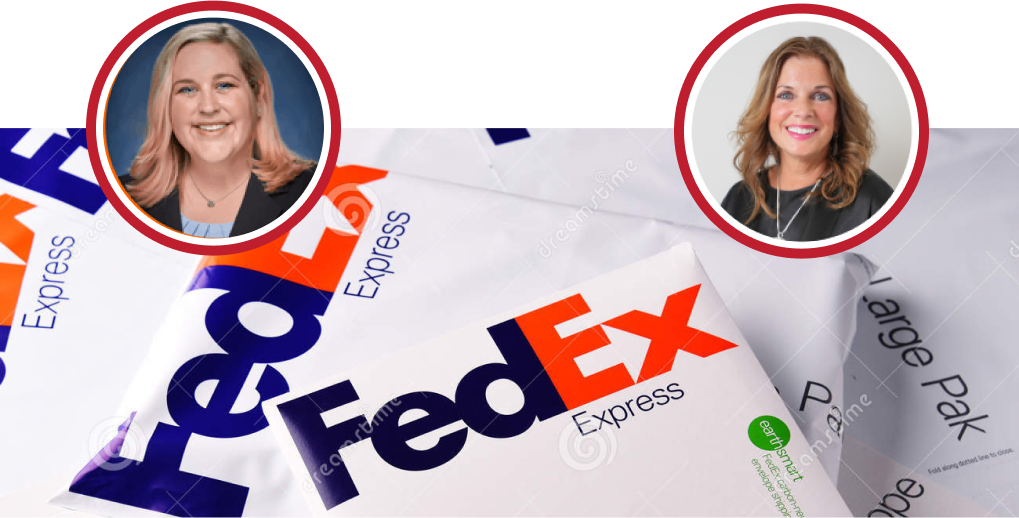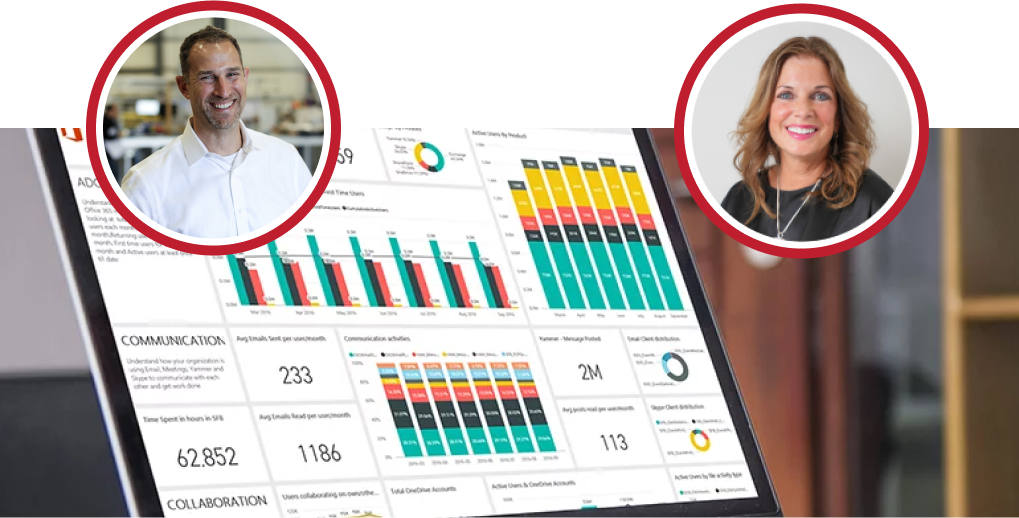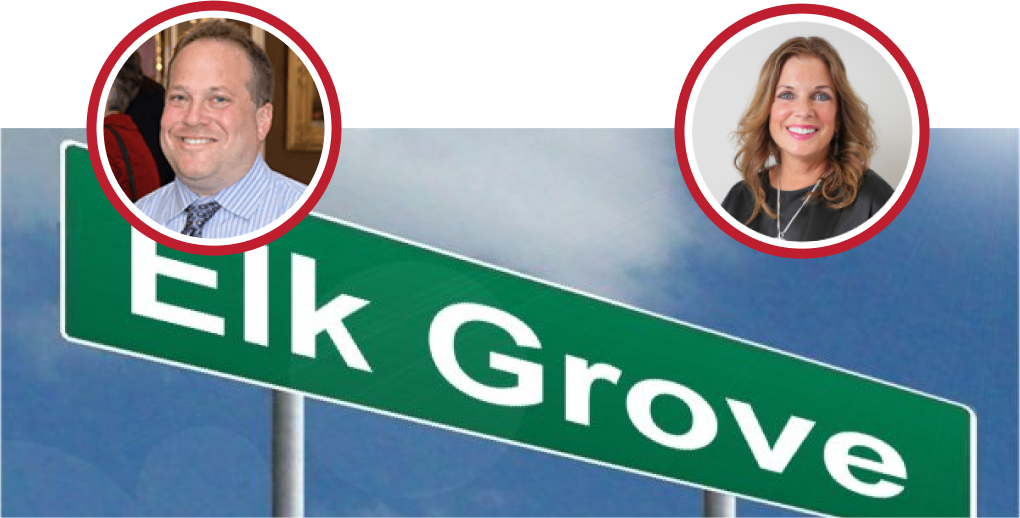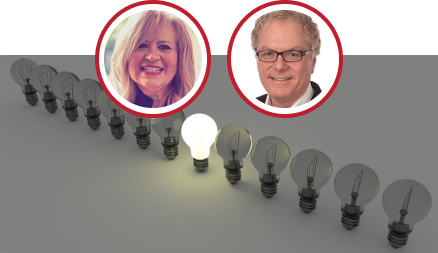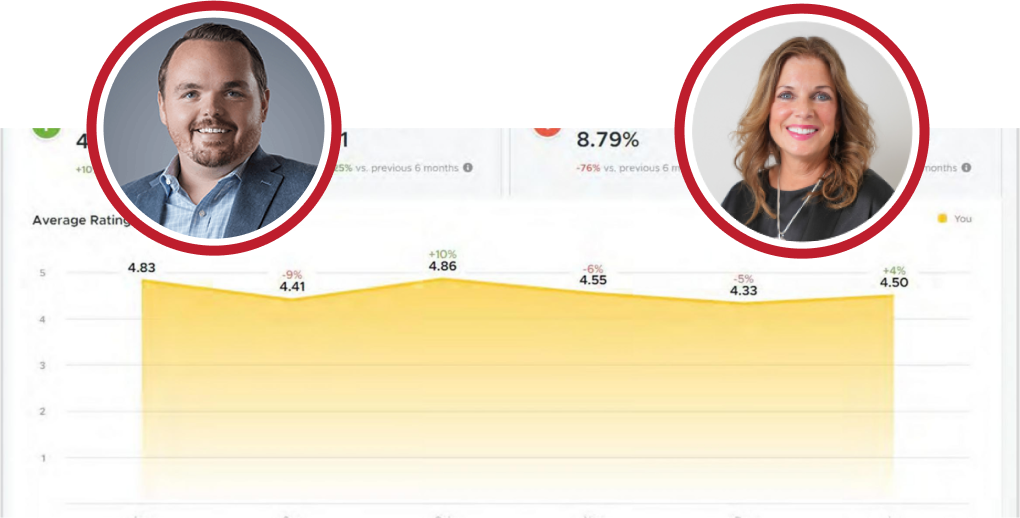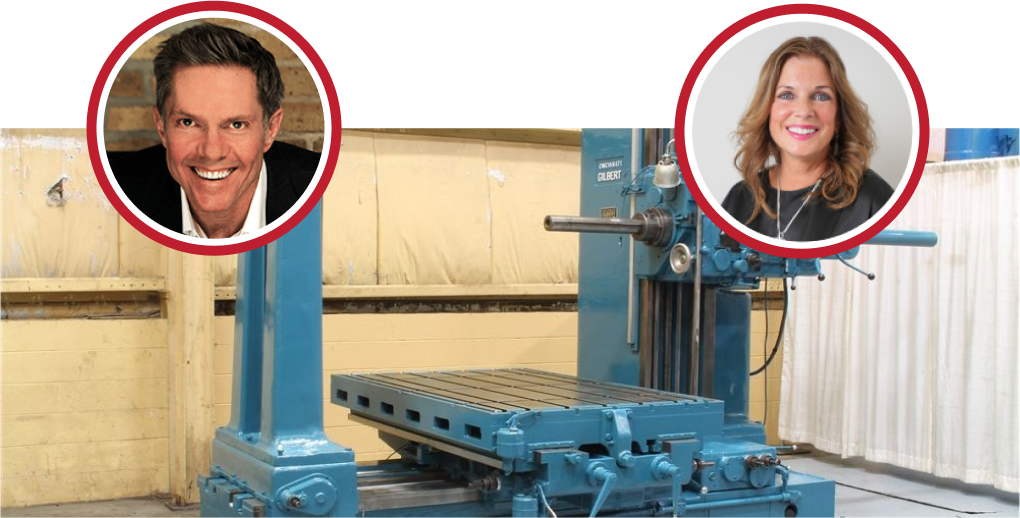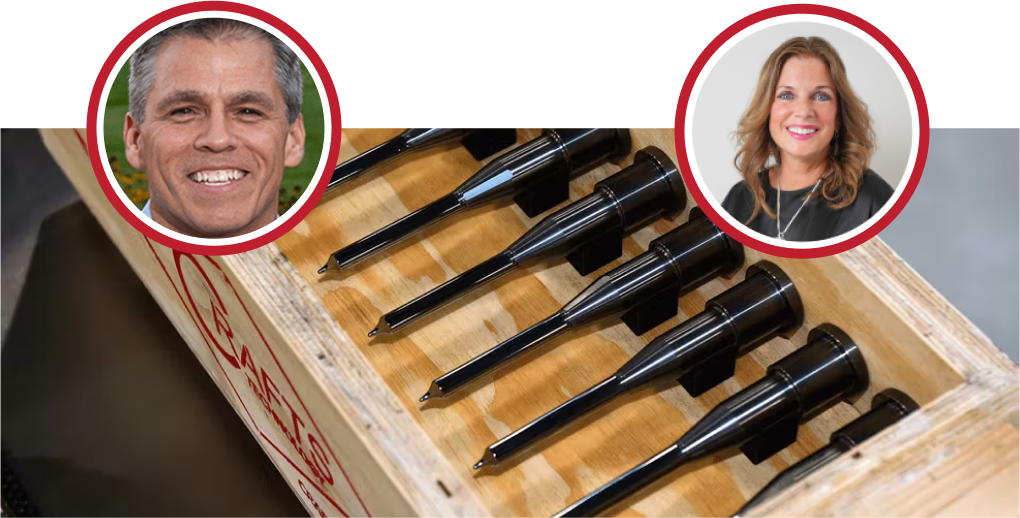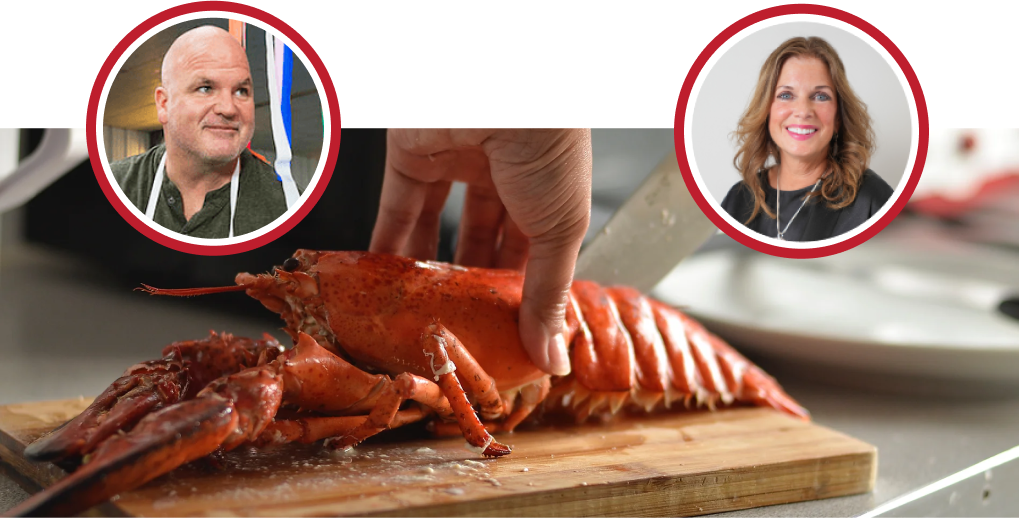Lisa: So, again, welcome to today’s “Business as Unusual” webinar series, where we are speaking with industry leaders who are helping us survive and thrive in today’s economic climate. My name is Lisa Behning, and I’m one of Brett Kathy’s account managers for today’s session; I’ll be your moderator. I’m pleased to have Kathy Steele, founder, and principal of Red Caffeine, as well as Rick Curry, Director of Human Resources and Organizational Development at Ballistics, as our two featured guests. Today, we are going to deep dive into revitalizing your hiring practices; all of Rick’s great years of experience are going to roll together in today’s session as we talk through best practices for hiring, finding senior leaders, how your company brand affects, your overall hiring strategy as well as a few bonus questions as we start looking to diversity and inclusion in the workplace. Today’s session is definitely meant to be interactive, so I highly encourage you to start using the chat function. I will be moderating that throughout today’s session and adding in questions as we see fit as well as at the end for Rick to answer as well, and again as we mentioned earlier, our first five registrants for today’s session did get a 20 Grubhub voucher to purchase lunch to help us support our restaurants who are continuing to be so hard hit during this pandemics time. So, again congrats to our winners today. I hope you all order lunch even if you’re not attending this life, but please help us support our other small businesses as well. With that, I’d like to turn things over to Kathy and Rick. So, good afternoon to both of you, and welcome to today’s session.
Rick: Good afternoon. Thank you.
Kathy: Yes, good afternoon; thanks, Lisa. I just want to start by just saying a little bit about Red Caffeine. Our mission is really to build badass brands that people want to work with and for, and today we’re going to be really talking about how to build a brand that people want to work for. I think it also makes people want to work with you when you’ve got great people and are super excited to have Rick here to talk about bliss stocks and his incredible career journey. So, Rick, would you just like to start off by giving us a little bit more of like a lens into your career? Because you’ve worked for so many interesting organizations and had such a compelling career journey.
Rick: Yeah, well, sure. Right now, I work as the H.R. director and od director for Blistex, and my responsibilities here include international staffing employee relations. We have employees in Canada as well, excuse me, I’m gonna have to plug in here, having a problem, okay? All right then, my computer just went. Okay, along with employee relations total compensation, the health and retirement plans in both United States and Canada. My background includes a lot of things that H.R. people get a chance to do if they’re really lucky. I’ve had two opportunities to start H.R. departments at a separate athletic employee stock ownership plan at one company my labor relations experience includes both union contract negotiations and union avoidance campaigns, and I’ve won three of those union avoidance campaigns in Illinois and another one in Minnesota. I’ve also served as an adjunct instructor at Aurora University for the H.R.s implementation program that they put in place along with their HRM and MBA program a few years back, but before joining Blistex, most recently, I served as vice president of global H.R. at a company by the name of act 2 Jewelry and most people know as Leah Sophia and created the infrastructure that we had there in H.R. for employees in Canada, China, Switzerland, Germany and of course the U.S. I’ve served as you mentioned I’ve served in H.R. and a few fortune 500 companies including United Airlines, Hilton Hotels, and budget running car. I graduated from DePaul University with a Bachelor’s Degree in the Master’s in Organization Development from the University of West Florida in Pensacola, and so that’s been my background just in a nutshell, but it’s I really like what I do in H.R. and Blistex is just a great place to be and get a chance to do all those things that I’ve done in the past, and we have a great H.R. team here which I’ll let me talk about later on.
Kathy: Yes, well, thank you. I love kind of hearing about the diverse background of experiences that you’ve had; it’s incredible to think about how many different opportunities would lay within being involved in an H.R. department and as you grow in your career. So, a little bit more about Blistex, can you tell us a little bit about the types of people you employ? A little bit, I mean, I think it’s you’re so well known for some of your products, but I don’t know that everybody understands the full scope of what you guys do at Blistex?
Rick: Well, our headquarters in manufacturing locations are located here in Oak Brook, and we actually produce the actual products here. Most people think that it’s done someplace else. We’re the only manufacturer in the town of Oprah Oakbrook’s not that big, but it’s not saying that much, but the city of Oakbrook reminds us of that every year we give us our senses, but Ballistics was established back in 1947. Right now, we have about 60 to 65 employees in the Oak Brook area and another ten employees in Canada, and we’ve been growing through acquisitions of other products. In addition to the lip balm, we also own tux Ivories foil and a few other products that use some of the same materials that we use in the lip balm. Believe it or not, I think, but right now we’re also selling products in about 80 countries around the world, so we have a very well-established international sales department here you mentioned the variety of employees we have here we employ everywhere from machine operators material packers to PHDs we have our research and research and development facility here we have about 45 research and development analytical and other quality control chemists on our staff we also have about four PHDs on our cap staff at this point as well.
Kathy: So yes, build a cross-section of hiring needs that’s a lot of different types of people and experiences, and so great, yeah thank you so kind of to further go into that, having a brand as Blistex has obviously helped in the hiring process. Imagine your employment brand is so mission-critical today and how to really become relatable to the audience segments that you’re targeting and with such a diverse workforce. Imagine that’s been an interesting part of the process in terms of recruiting, but we’re going to play a quick video just to kind of demonstrate how you’ve demonstrated your brand and then ask you some follow-on questions about it.
Rick: Okay.
Video Plays: Our company was founded in 1947, and we’ve been going strong for over 70 years. We are an independent family-owned business with our corporate headquarters manufacturing and distribution facilities located just outside of Chicago, Illinois. Blistex is best known for its expertise in lip care, and as we’ve grown, we’ve added other outstanding consumer healthcare brands such as Odor readers, Stratex, Tux, Kanka, and Ivorist. We’ve also expanded internationally. Today our products are sold in over 80 countries. Hello, I’m Justin Arch, Chief Executive Officer of Blistex Inc. I’d like to welcome you and thank you for exploring Blistex as part of your career search. The job I do on a day-to-day basis is making sure we get the product out the door to our customers ensuring that we have all the components, chemicals, and the equipment to get those products made produced and out the door to our customers. When I first started here at Blistex, I was the manager of compounding and production. That position allowed me to really get my hands dirty in Ballistics and learn how it operates and then allowed me to develop in my career through the leadership development program, and then I later became the director of manufacturing. We really invest a lot of time in our products creation of products and even our sourcing of optimal quality ingredients, so got a formula put together, we make sure that both formula final product raw materials all pass rigorous inspections and internal tests.
Lisa: Another bandwidth of internet here and see if that helps us, so we can continue here, and we’ll see if we can get this to play again.
Video Plays: To develop the program, and then I later became the director of manufacturing, we really invested a lot of time in our products creation of products and even our sourcing of optimal quality ingredients. So, once we’ve got a formula put together, we make sure that both final formulas product we make sure that both formula final product raw materials all pass rigorous inspections and internal testing to ensure their safety and effectiveness for use by our consumers. I started at Blistex as the regulatory affairs coordinator, then was promoted to specialists, and now currently the regulatory affairs supervisor feel like Blistex has really given me the opportunity to help grow my career, and it’s really given me a great sense of accomplishment our products have a strong reputation because they work we’ve been in the lip care business for over 70 years our products are known as being very efficacious there’s a huge product assortment. So, when somebody has a particular lip care need, they know they can go to the Blistex section to find something that will suit that need, and they know that it’ll work. I started with Blistex as an administrative assistant, and over the past 27 years, I’ve worked my way up to my current position, I think, especially in a marketing world where folks are on a brand for a couple of years and then move on to another company Blistex allows us to succeed professionally and individually as our careers grow my team it’s all about.
Lisa: The video is a little bit longer, but in the interest of time today, we’ll do that. Please know we will share the rest of the video in our follow-up email.
Rick: Okay.
Kathy: Yeah, and what I love Rick about this sort of viewpoint or lends into the employee experience is that it talks so much about the pride of the product that you deliver, but also about the opportunity being able to start a manufacturing career and start sort of on the ground floor getting my hands dirty, but now I’m in this, in this more senior position. So, can you speak to how leveraging your employment brand has helped in your recruiting and engagement practices at Blistex?
Rick: Yes. Well, it starts with having a good brand and a good reputation within the consumer products industry which we do. As I meet people outside of the company, we have a reputation for being a very well-known product of a high-quality product which we are, but a lot of people think that we’re much larger than we are and so that that helps us, but when it comes to branding it’s that brand recognition carries forward to the recruitment process as you can see in the video we have a culture of hard work excellence in our rewards and recognitions for employees of the employees that we have on hand right now. We have about 101 people that have been here for more than ten years, and another 50 people have been with us for more than 20 years, and I think that speaks to the idea that once people join the company and they see that there’s hard work, but there’s recognition and reward here that makes people want to stay with us and when it comes to recruiting even in the recruitment field. We have a reputation of being a place that you want to aspire to, and our people are sought after, so that helps us with our recruiting through the pandemic. We’ve kept recruiting. We’ve added ten additions to staff in this calendar year, and we’re getting fewer applicants, but we’re still getting quality people and filling our job openings.
Kathy: Well, I think anybody that has to vet through thousands of applications knows how important it is to get that right fit candidate pool and not to spend a ton of time looking at people that are not a right fit, so I think that’s such a win in when you’re scorecard your effectiveness from a branding standpoint in a recruiting standpoint just knowing that your job descriptions the way you demonstrate your brand visibly to employees and recruits is telling that appropriate story so the people that are applying, really want to work at your organization and be a part of your culture. Talk a little bit about the culture fit pieces. What would you have such a high-quality product that sort of filtered into the type of culture you’re also building?
Rick: Yes, we consider ourselves a learning organization and a continuous improvement organization. We have a number of programs, one of them called our winner’s circle, where we reward employees for coming up with ideas both on product procedures; of course, our research and development department is constantly focused on new procedures and new products, but we really focus on making sure that we have excellence in our and our products and our work we have a unique culture where we work hard we reward people, you can see that people stay with us, but it’s not for everybody when I joined the company I realized this is one of the best managed mid-sized companies that I’ve experienced, and it’s in it there’s a focus on best practices there’s a focus on learning there’s a focus on continuous improvement and I didn’t expect that in the company this size.
Kathy: It’s awesome. I think it’s so hard to be able to sort of big bring that big brand enterprise kind of experience to your staffing strategy in smaller organizations, so it really does show up in the number of times people stay in their jobs at your organization you’re obviously providing a really clear growth path and a lot of learning opportunities for people along the way. So, I also, I think we forget I was fortunate to meet some of the founding family members earlier in my career, but it’s a family-owned business, and that brand perception of you being such a large, a lot larger organization than you actually are but also that you’re a family-owned organization so talk a little bit about that family dynamic.
Rick: Well, right now, the third generation Justin Arch as you saw in the video, is our Chief Executive Officer, and I report to Justin. His father, Dave, is the chairman of the Board of Directors, and he’s in the office a couple of days a week; in fact, his office is right next door to mine. So, I get a chance to say hello to him every once in a while, but I think from something you’re alone in your MBA classes is that the third generation of a privately owned company is the hardest one to get past to keep the family members interested in the company and I’ve been in this is the third privately owned company I’ve worked for [Music] what’s unique about Ballistic is that the third generation is very much engaged with Justin being here as our CEO we do have a separate person who is a president another person who is a Chief Operating Officer as Justin received his education he actually went out to work for some other consumer practice product companies early in his career before coming back here as a vice president of development. So, he got an idea, he got an idea of what’s happening outside of list sticks before coming back to Ballistics and really getting to learn and eventually manage this company, so I think that’s that speaks well of the family’s philosophy for one continuing the family in the end in the business but teaching and having that that person learn something besides Ballistics and it’s really worked for us.
Kathy: I love it, yeah, and it’s just it’s so you’re so right. I mean, we work so much with manufacturers, and it is so fun to see the generational changes and what each generation brings to the table, but it is challenging to keep that the inspiration and that passion through multi-generational businesses, so it is, I think that ability to go outside the organization and learn to have learning experiences was probably a really critical part of having him come back and be a successful new leader so let’s talk a little bit about senior leadership recruiting because it is a little different and you have honed a process around recruiting for senior leaders can you step us through that process, and I believe you even actually hired your own your boss through this process right you’re wanted.
Rick: Yes, I did. No, when we were talking in the past we talked about some of the 12 steps I have put together for recruiting senior people I’ve recruited vice presidents and some of those companies that I mentioned country managers for some of the other companies that I’ve worked for and our president here at the six is retiree so over the past year I led a project to find our new president which heads up our marketing sales and product development department in some of the steps and I’ll combine some of the steps here but I think some of the important things we look at is we should we start out by and let’s say we even though this was my project as a leader I worked very closely with Justin art the CEO our manager of OD and Talent Management and with a lot of input from the the C-suite of people all of our vice presidents here we revised the job description and we looked at our company culture in a way that we can write down what is our company culture because we have to be able to [Music] define our company culture to the executive search firm that we eventually hired of the type of person we’re looking for we want that person to have an impact in the company but we also want that person to thrive in this environment as well so that was an important first step we are [Music] we did a very thorough search of executive search firms because we did a a nationwide search for this particular person we actually bedded about 12 executive search firms we want to focus on the firms that were working in our industry knew good people within this industry and had a good track reputation so we looked at a bunch of a bunch of search firms what their hires were how many of those hires actually are still where they are and things like that we did end up with a search firm out of New York that we were very happy with but that’s important having the right description of the job having the culture defined when we go to that search room we can say here’s what we’re looking for this is Ballistics here’s what we do and here’s how we work the next step was benchmarking the job description our current president or our past president had been with us about 26 years the job description was old we had we wanted to know what was the current market for total compensation package for this person what does base look like what is short-term disability look like what is short-term incentives and what is long-term incentives looks like with this type of role and if we happen to bring somebody from another state what does that relocation package look like so that was a exercise that Ballistics had not been through for many years. So, so that was that was important step as well we also had to define the assessment process what does that look like we used we know we’re going to be doing interviewing and looking at the person’s background and their resume and things like that but we also incorporated some a battery of tests as well as psychological associations and we have to find an organization that could do that at that level we use some other testing tools on a regular basis for our middle management and professional people but we want to do something at a higher level so we found an organization my name was psych associates who does that type of testing and psychological evaluations and that turned into some of our top candidates went through that particular process I’ll say it to be nice about it it’s a process and we ended up having conversations with those psychologists to tell us about this person what did they see what does that person like to do what are the personal characteristics related to the job and, and how does that compare with what we were looking for at Blistex because this person is gonna have and we want this person to have an impact but we want this person also to maintain our culture and like I said before we want this person to thrive in this environment so we got through that that process the executive search firm found the candidates for us to talk to and we probably talked to about 12 people that made it through the background and the resume review and we talked to a number of people and all the while we’re thinking of not only does this person have the right background does this person look like a good fit I mean that’s very important we want to make sure that like I said that person will thrive when they’re here another important part of a senior job search is the communications plan who do you tell that this is happening I started this the process in June of 2019. in November we told the c-suite the vice presidents and directors that the president was retiring we’re we’ve engaged the search firm to find another president and so that happened in the November time frame we looked at internal people too we said if you’re interested now’s the time to think about that and let Justin know if you were interested in that process toward the first part of the year we communicated that with we followed up with those c-suite people to ask them their interests their input and ensure them that they would be part of the in the interviewing process as well so communication of a program like that is very important it’s continue on in the communications process we did not tell the general employee population until we had a town hall meeting in June of this year when we finally told everyone that we had found someone and this is what the transition is going to look like over the next several months but going back to the part I was mentioning about the the benchmark of the job description and the total compensation package now we have to negotiate the job offer for this person what is we take into consideration the base compensation for that person we look at the compensation for the direct reports for that person to make sure that there is some distancing there we have a short-term incentive program that that runs continually at Ballistics and we have to determine what is that going to look like for the new president and then the long-term incentive what are those type of things that will apply to this long-term incentive where do we want to be two years three years from now as a company how does that particular person the new president help us get there and what incentive are we going to tie to that so that was the number of conversations that that Justin and I had and and even got the the executive search from involved in that process as well so and once we got through all those processes it was the onboarding which was critical that when the person comes into the company they’re meeting with all the right people that they need to meet with in those first few days their documentation and paperwork is taken care of even the president has to take a drug screen so he didn’t get a pass because he was the president so we go through that process the I guess the more interesting thing is that I do a lot of hand holding through that process myself I don’t normally get involved with the onboarding we have two people that’s totally dedicated to recruitment at our company and another HR generalist who does a lot of the paperwork but I pretty much went through this process with our new president and he joined this in august of this year.
Kathy: So, I mean, I love it. I think, it there’s so many things that you would pull through to any buddy that you’re recruiting but I do feel like just because of the level of the position as well as, as the discreteness in doing a search like this but I loved how you thought about the internal impact it was going to have on, on your workforce and getting buy-in from that management layer that was going to need to be make it or break it for a new president if they’re not if they’re if there was a lot of friction there that would be a huge challenge to overcome and that you were marrying up the real cultural needs that you had of the organization but as well as the business needs like what was the right characteristics that we’re going to take your organization forward with this role so thank you for stepping through this and but kind of thinking about those steps in turn in terms of how you hire for any role because I love the phrase you use when we were talking a few months ago about hiring packers to PHDs you mentioned you do use a lot of these same steps in your hiring processes anyways is it is there anything that you take out beyond the executive search firm or some of the extensive psych evaluations that used in this process .
Rick: Yes, with, with all the other positions that we normally hire here, we still do a good job with background checks, we’re reviewing resumes, interviewing people, we have an applicant tracking system that’s out on the internet, and that feeds us a lot of resumes from people. We don’t normally do the psychological association and the more higher level battery of tests for our for the people that we bring in but we do we use Wonderlic we use the Colby and that would apply to any of our professional and management positions and our head of recruitment the manager of od the hiring manager for that particular role maybe some of the other managers in that department they’ll have a conversation they’ll look at all those factors before making a hiring decision I mean in something like a Colby test or a Wonderlic test is not a make it or break it but it becomes one of the factors in the hiring decision so that’s a big difference in the communications program process is different too I mean yes we went several months before anyone outside of the committee knew that we were searching for someone but on the other hand when we’re doing other searches we post those searches we don’t even interview someone from the outside so that posting’s been up for 10 days and we have a very nice referral program so those are some of the difference with some of the other positions that we recruit for.
Kathy: Yeah, thank you. I thank you for sharing so many great tips for thinking about the overall recruiting process agree that there’s just so much great technology. Is there anything else that’s kind of shifted in your recruiting process since Colbert? Are you doing a lot more virtual meetings, or have you done anything new since march?
Rick: Oh. Absolutely, we have moved to a nearly 100 virtual interviewing process and when I think about the post pandemic role I think it’s going to look a lot like it does now with maybe without the virus that we’re still going to be doing a lot of video interviewing even local people because it’s we’re finding out that it’s effective it’s time saving we bring people in for maybe that that final round of interviewing we’ll bring them in we want to show them the building the property and things like that but that’s been something that’s very different for [Music] us we have and I’m kind of telling on ourselves but we’ve kind of resisted the work from home over the last few years as that has become popular but now since like April we’ve been able to see that people large amounts of people working from home we can maintain our productivity we can maintain our connectivity and that’s working for us but we were forced into that that world is to see that but I’ve also since we’ve started that in April I’ve coached managers on managing people remotely I’ve coached employees on managing themselves and in their work environment remotely we provide them with some training materials but that’s been the biggest change.
Kathy: Yeah, having had a lot of flexibility in our workforce prior but having, obviously, I’m not at home right now, more flexibility; I think this has just been a shift for all of us recruiting completely remotely. I agree it’s been great some of the effectiveness, but onboarding remotely it’s posed a lot of challenges. I don’t think most organizations, unless that was your way of work, really had this buttoned up and we’ve all had a really accelerated how we do both recruiting and onboarding just based on how what we’re faced with right now. Lisa, I see some really great questions coming in. Do you want to give Rick a few of those questions?
Lisa: Yeah, one of them, actually Rick, fellow business and Oprah, would like to connect with you, so I’ll make sure that we get you and Lisa’s great name connected towards the end, but another one of our individuals, Marty, asked Rick when you were mentioning about the testing, so you do the psych assessments are you also testing for anything like an agility mindset or an agility-based assessment tool they’ve got a personal interest in that, so I wanted to know if you had anything about agility or adaptability? As far as when you’re looking for leaders or just another employee to help fill out the Blistex family.
Rick: Yes, for the like I said, the professional and management people we do use to Wonderlic in the Colby, the Wonderlic is more of a [Music] mental agility test the Kobe is a more of a what we call a cultural and working style fittest because we do a test with that particular manager supervisor department head to see how they function in the workplace, and we compare that to the person that we’re interviewing with their Colby test, so we are looking at that so but for the senior person the president we use the Thurston Tessa, mental alertness, the Watson Glacier critical thinking test, and leadership opinion questionnaire in the dimensional management matrix. I had to write those down to make sure in case somebody asked me what they were so.
Kathy: Thank you, yeah, there are so many, so many options out there, but it is nice to see what people are using and really understand how they’re using it because I do feel like there are a lot of tests out there, but people aren’t really bringing it filtering it through how they’re matching up what they see in those surveys and that data to how somebody’s performing in the first 90 days or how somebody’s performing over time and how do you build out a team that’s got some diverse skill sets and strengths.
Rick: Yeah that that’s very important what you said that we do need to look at those tests in terms of how the folks are going to perform we had a a little bit of a dilemma as we were searching for the president we had a lot of good candidates a lot of people that could have come in here and did this job and did a very good job but one of the dimensions that I mentioned is looking at that person’s style their way of making an impact their consideration for the people that they work with and that’s very important in our culture we we’re hard driving company but we’re very employee oriented so there was there were some candidates that I looked at that said that Canada can do a good job but that candidate is so hard charging that they’re going to rub people the wrong way and that’s scale scaled down version of what the conversation was like so that that was that’s a very important concern for us so and to your point of how we use the test that we do use how do we how do we factor it into our hiring decision.
Lisa: Absolutely. Rick has a clarifying question on your last comment, so all of the tests that you mentioned, everything from the Watson to the Colby on through, do you use all of those tests when you’re looking for a senior leader, or are you kind of picking and pulling specific ones.
Rick: The Watson and the Colby, apparently the Wonderlic and the Colby, is used for our professional jobs, our management jobs. Here is the list that I read that was performed by the psych associate’s organization that was strict on what we did for the president’s candidates.
Lisa: Okay.
Kathy: Great, thank you, so I want to make sure we’re talking about, really, the engagement of employees. I think that’s one of the most important or one of the high highly valued things that we hear in terms of the laundry list of things that employees want from an employer, so can you talk about how you’ve approached the culture learning and development program at Blistex because it’s clear that people are sticking tell us a little bit about the secret sauce that keeps them engaged and being a part of your organization.
Rick: The secret sauce is called LEP and PEP, which is our leadership enhancement program and our professional enhancement program. The LEP program is a 12-module management development program that we’ve we purchased this program years ago, but we’ve customized it for Blistex, and it has modules in it like coaching and counseling and leadership communications, and though this is even a short module in there for employment law that managers should be aware of [Music] all of our management employees that have a management title supervisor title director title are going through the LEP program. We delivered in about six months six for our modules over a few months there’s pre-work there’s the courses and there’s after work because we want to make sure that the person comes in the class as the I don’t I don’t deliver the classes our od manager does they come we come into the classes we know what that person’s supervisor has identified as development areas for that particular person we make sure that we focus on that in the class and we try to get feedback from them in the class but there’s also what we call after work where that that participant is talking about in writing what they’ve learned what they’ve improved on over the last 30 days and their supervisors also doing the same thing of saying what this person has demonstrated from participating in the class and it doesn’t stop there the od manager myself consider ourselves the people who will always support those folks based on the LEP learning factors that we that we delivered in the class the professional enhancement program is a little bit about a little bit scaled down version of that less of the leadership components in there in the training as well we have other classes some of them that we’ve developed internally for team building specifically for some of the groups in our particular in our particular departments around the company but we’re also looking at a more formalized version of what we call [Music] mentoring employees developing employees and turning into more of a mentoring for as a metric what we’re designing is that some of our higher level department heads and directors will have one of their annual goals to mentor a high potential person to develop an individual development plan for that person individual training program for that person to the point that by the end of that performance year that person is ready for promotion and that is part of the department head’s short-term incentive plan so it’s it becomes more formal at that point but I think we do a good job of mentoring people you can see in the video all those folks who have been with us for years and grown the lady who was the supervisor of regulatory documentation is now the manager of regulatory documentation as of a few months ago so that’s it’s a important part of our Blistex Ballistics culture here the growth the mentoring the continuous development of employees when we increase the competencies of our middle management that gives senior management more opportunity to work on strategy and execution so that’s important that we increase the competencies of those of people in middle management it’s just they’re a better person the department’s a better department company is better.
Kathy: I love, it is really, I mean, it’s kudos because I know you are still a relatively small company and I think that’s the most difficult for our mid-market businesses to invest in employee development and it sounds like you’ve really got some great programs in place to help elevate people and it was like it’s coming kind of late to the mentoring experience that myself I’ve just been so I think I’ve advanced so much just by being mentored and have having peer relationships that elevate my thinking so it’s we’ve even found unique opportunities to get mentoring outside of our organization to help ladder up or level up some of our team because it’s not always possible within a smaller workforce to tap into mentorship but I don’t want to let the I want to ask about what you guys are doing in terms of one of the most hot button topics right now the last few years about a diversity equity and inclusion everything from gender pay to diversity more diversity and opportunity in the workforce for diverse candidates all the way to like the ages of our workforce from very young people to people staying well past where they had and being vibrant contributors so talk to me a bit about this really big question but give me a few nuggets about what you guys are doing at Ballistics on those topics?
Rick: Well, when I think about diversity I think not only of the demographics of people the different backgrounds that come here but also the age differences we’re a we do affirmative action plan each year because we’re a government contractor and the one thing that many things many advantages to that but it also gives me an opportunity to look at the demographics and the diversity within this company and we have a very good diverse group at all levels if there’s anything we’re missing is probably some females in the skilled labor area so if any lady forklift drivers or lady mechanics we’d be happy to talk to them but we have all through our management group we have people from different backgrounds males and females so we’re doing a good job there that that hasn’t been an issue for us and even with [Music] the things that are going on now we haven’t felt the need and we’ve had a conversation I’ve had a conversation with the executive committee being the president the CEO and the chief operating officer and we’ve had an honest conversation about what do we do about the diversity issues or do we start some type of program and we just didn’t feel like that there’s nothing that we needed to do specific for diversity we do advertise through a lot of super job boards around the united states and we do specialize in some advertisements for some diverse diversity groups again some of the female professional groups but we’re doing very well in terms of diversity when it comes to various backgrounds and when it comes to age and I know that that’s another hot button but I think the work ethic of people at various ages is more important than the influence they might get from their generation we have people here at every generation that you can think of in this company obviously we’ve got some long-term people who we’ve got people here that have been with us for 20 30 years and beyond that we have a very active internship program to work with the university of Paris university we’ve had seven interns over the last few years we’ve hired two other interns there’s been times when we’ve made offers to professional people a month before they graduate from college so we do have a big diversity in age here and I think if they’ve got the right [Music] work ethic and they understand our culture coming in the door we seem to do okay with that that doesn’t seem to be an issue it’s either as well I mean we’ve been a lot of the younger people like technology we’ve got all the technology they need we’ve got the ability to do conference calls and reader and VPN they can be anywhere and do their job that’s really not a challenge for our company for our people so I think we didn’t feel that we needed to do something specific for diversity here I mean when it comes to the the compensation issues we’re required to do a bi-annual study of compensation between males and females which the government program has been around for a while and we test well there too.
Kathy: That’s great. Honestly, it still astounds me. I was just having a conversation yesterday with somebody about her difference in compensation from her male calendar part, and it just it’s really shocking that it’s these things still exist, but it’s if you’re not mandated, I do think there’s a lot more flexibility in how you view your entire hiring practices, so I want to give some time to ask some questions is there anything Lisa that’s come up.
Lisa: Yes, actually, we’ve had some great questions, and Lynn actually asked Rick as you started talking about mentoring; I was like, I’m wondering how they use mentoring in their organization, so it was perfect timing on that, but I wanted to go back to that mentoring and development plan segment so the first question I want to ask is from mike and he wanted to know where do you have all of these personal development plans either posted or stored how are you keeping track of them especially if you do have 460 plus employees.
Rick: We, well, it’s multifaceted we have a formalized performance management program that we do at 90 days [Music] six months for some positions but every position is done at least once a year that information those performance appraisal documents come into his talk about the logistics they come into the H.R. if the performance appraisal is not reviewed or written by a vice president then I read them myself so I read about 80 of performance appraisals that are done every year and I’m looking at making sure that the essay part of the performance appraisal supports the rating that they gave and if not then I’ll have a conversation with that that manager we also have a formalized individual development plan that can be done in conjunction with performance appraisal I receive those I give those to the od manager who will work with that employee and their manager to make sure that those training requirements we make a way for those training requirements to get completed whether they’re inside or outside the company.
Kathy: Okay, so are you using any type of tracking software? Does your H.R.s have modules, or is it more of a manual process?
Rick: Interesting that you would say that we are we have ADP workforce now we bought all the bells and whistles, and we have the performance management module, and we’re going through a beta test right now, okay so we’re working with one department, going through that entire process the entire process that I just outlined so once we complete the beta tests, I would say in 20 later in part of 2021 we’ll have the entire company on the online performance management system that we already own.
Kathy: Fantastic.
Lisa: Sounds great, and then going back to that to knowing again you’ve got your performance plans there we have your LEP and your PEP, and maybe we missed this, I wanted to reiterate from one of the questions is there anything in any of your programs to help your team leaders with their ability to adapt and ability to communicate with either their employees their peers there are superiors in the organization.
Rick: Yes, the LEP program has about 12 modules 12 training modules, and some of those include leadership styles, so some of those modules talk about communications, communications both with your department members with peers, and so forth, so we’ve covered I don’t have the list in front of me, but it’s a very diverse group of training modules as part of the LEP program, so we are getting to I think all the basics for developing managers as a professional an as leader as a person who should be aware of some of the employment laws that affects employees as well so.
Lisa: Oh, thank you, just to round out, as we move towards the end of today’s session, I realized we’re nearing the 1 pm central time hour, but I think our time has gone so quickly. Kathy and echo, great info, everyone. I’m hearing this in so many other areas from other top companies about the use of mentoring the assessments and the routine leadership training. So, kudos to Rick and Blistex for leaving the charge and sharing your info with us today.
Rick: I’m glad to be here; thank you for inviting me, sir.
Lisa: Kathy, any final questions from you before we move to the close?
Kathy: Rick, what’s one thing that you’re thinking about for 2021? Is there what’s in the future plan for next year?
Rick: Well, I mentioned the moving our performance management to 100 technology base that’s going to be a major project for us as well as in conjunction with that the mentoring as a metric project this is something that our new president is in favor of, and we’ve had some conversation about it, and those are gonna be some good major changes for this company that’s where the od part of my job comes in so.
Kathy: Fun, that’s the fun stuff, so yes, it is so well. Thank you so much. We really appreciate your time today. You shared some great tips that I think everybody really relatable stuff regardless of the size of the business, that we can make all kinds of taking back and to our own organization, so I appreciate so much having you today.
Rick: Thank you again for inviting me.
Lisa: Thank you, and for those of you that have questions, I saw one pop up in the chat. As we’re moving it to the end of the hour, you can actually reach out to Rick. We’ve got his contact info there at his Rick Curry blistex.com, or you can also connect with him on LinkedIn, so I’m sure as all of us take in all of this great information and even though Rick, I’ve gotten to interview you now a few times I still have three pages of notes from today’s session. So, thanks to you so much.
Rick: I’m glad to be here. I’m glad I can help.
Lisa: So hopefully again too if you think of those questions after you’ve thought through all the great content Rick shared today please reach out to him or you can also connect with us at Red Caffeine as well as we look ahead in two weeks is our next “Business as Unusual” webinar November 5th featuring tom LaFave president of Anchor Harvey and when I talk about this year and I’m going to use this year in particular and everything that has happened we’re using tom and Anchor Harvey in two weeks as a living case study this company has really looked and pivoted their business so that this year when a lot of us are hoping to stay flat or maybe in some instances a little bit less I don’t want to say failing but we’ve all felt struggles Anchor Harvey is actually up 25 and they’ve really invested a lot in changing the way that their business works so we’re going to interview tom in two weeks and he is going to share basically open the toolbox of what they’ve been doing and how YouTube can implement that at your company so you can go to redcaffeine.com click on the businesses and usual webinar series to register we’ll also have the link in the follow-up email containing the recording from today’s session so you can register right there as well for those of you if this is your first time attending “Business as Unusual.” We hope you enjoyed today’s content. If you have any questions about Red Caffeine or what’s upcoming, you can connect with us at connecting redcaffeine.com.
